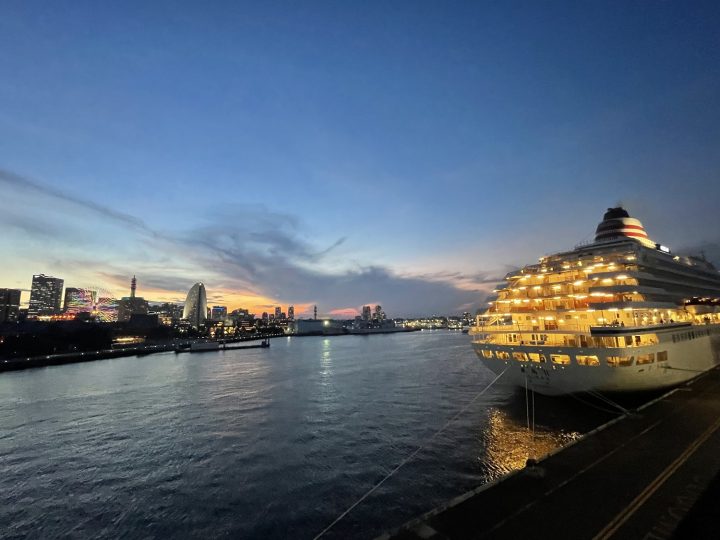Improve your luck, fortune, and love life! Visit shrines and temples in Kanagawa to make your wishes come true!
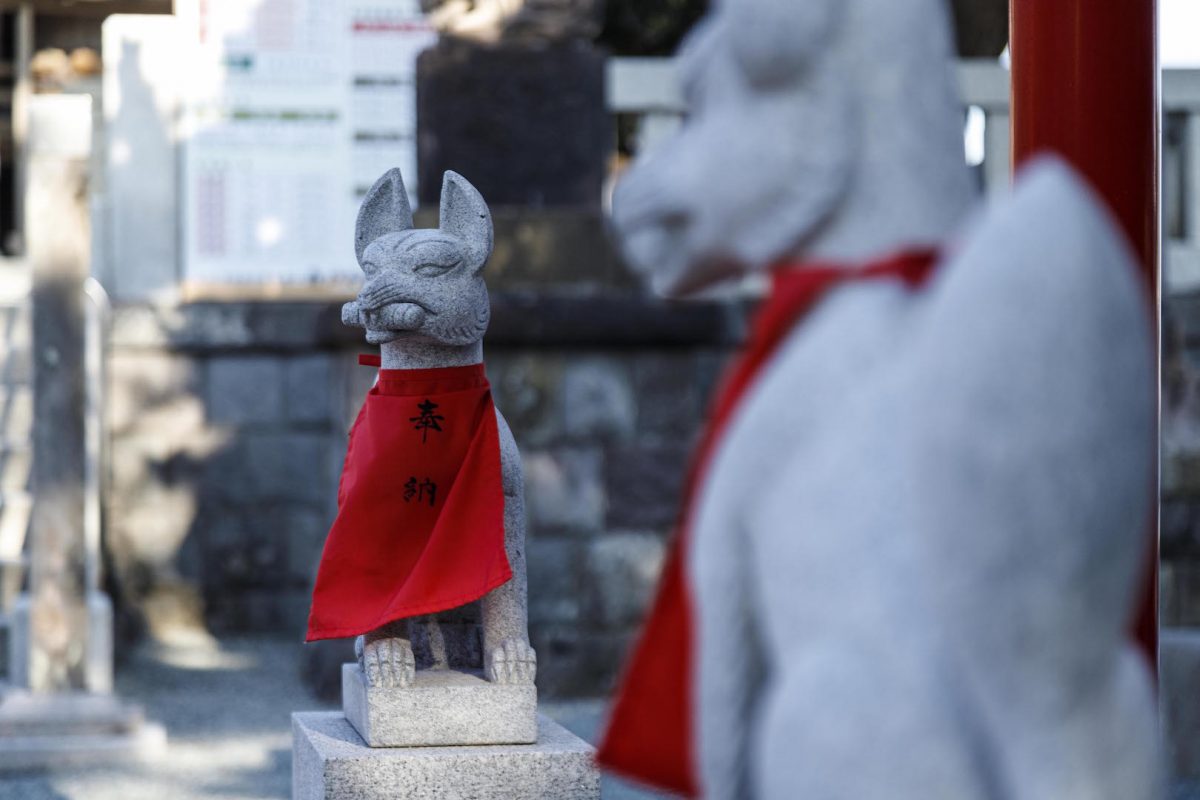
There are many shrines and temples in Kanagawa with beautiful architecture as well as stories related to the buildings. These are sacred places that have been carefully protected, but as long as you observe the proper formalities during your visit, gods and the Buddha will welcome you with open arms. Why not visit these shrines and temples to experience their tradition and culture, and also beseech the heavens to smile upon you?
Morito Daimyojin Shrine

Morito Daimyojin Shrine is said to have been built in 1180 by Minamoto no Yoritomo, bringing the divided spirit of Mishima Daimyojin from Mishima Taisha Shrine in Shizuoka. The existing main hall was built in 1597, and with over 400 years of history, it is designated as an Important Cultural Property of Hayama-machi.

On a clear day, the shrine overlooks a spectacular view of Mt. Fuji by Sagami Bay. Despite the solemn atmosphere, the view will make you feel like you are at a luxury resort.
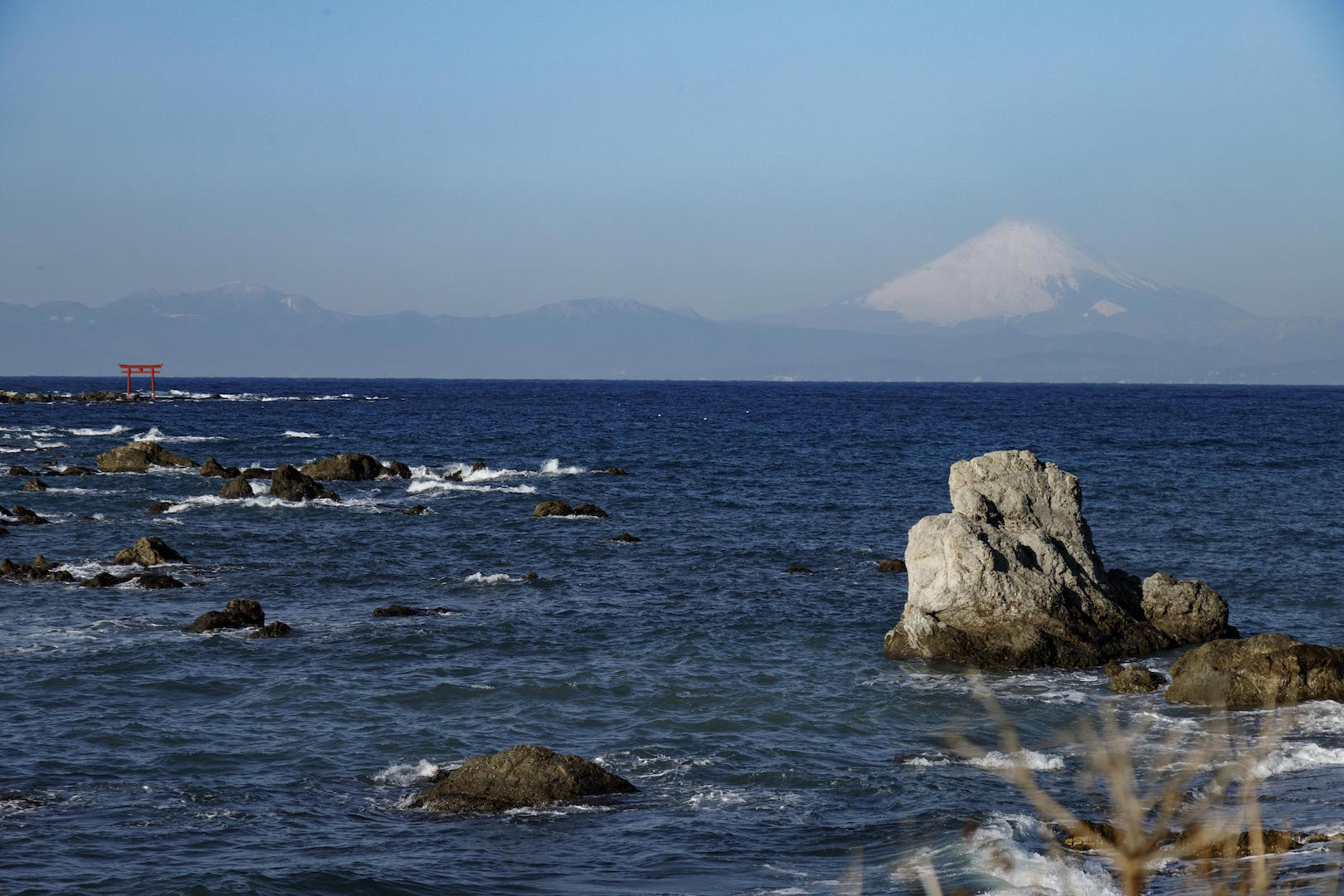
Oseki Inari-sha Shrine, located just in front of the main hall is said to help heal coughs and other illnesses and so it is commonly revered by people in professions that rely heavily on using their voices.
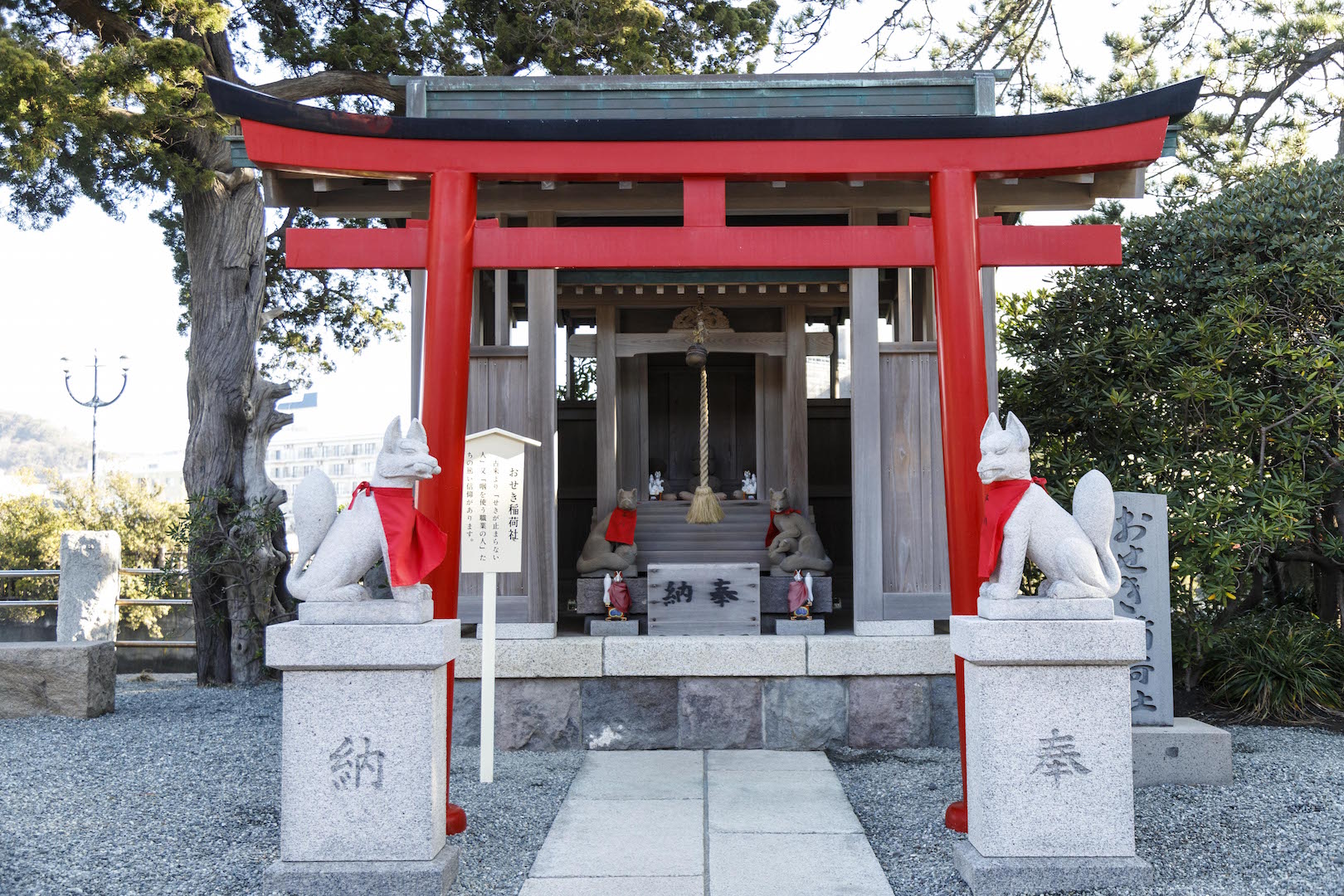
Suiten-gu Shrine, which is reputed to confer blessings of smooth delivery and having many children, is also located here. At the Fudasho, or shrine office, charms along with Kodakara-ishi stones for childbirth are given out. Upon safe delivery of a child, it is customary to return the Kodakara-ishi stone to its place behind the shrine.
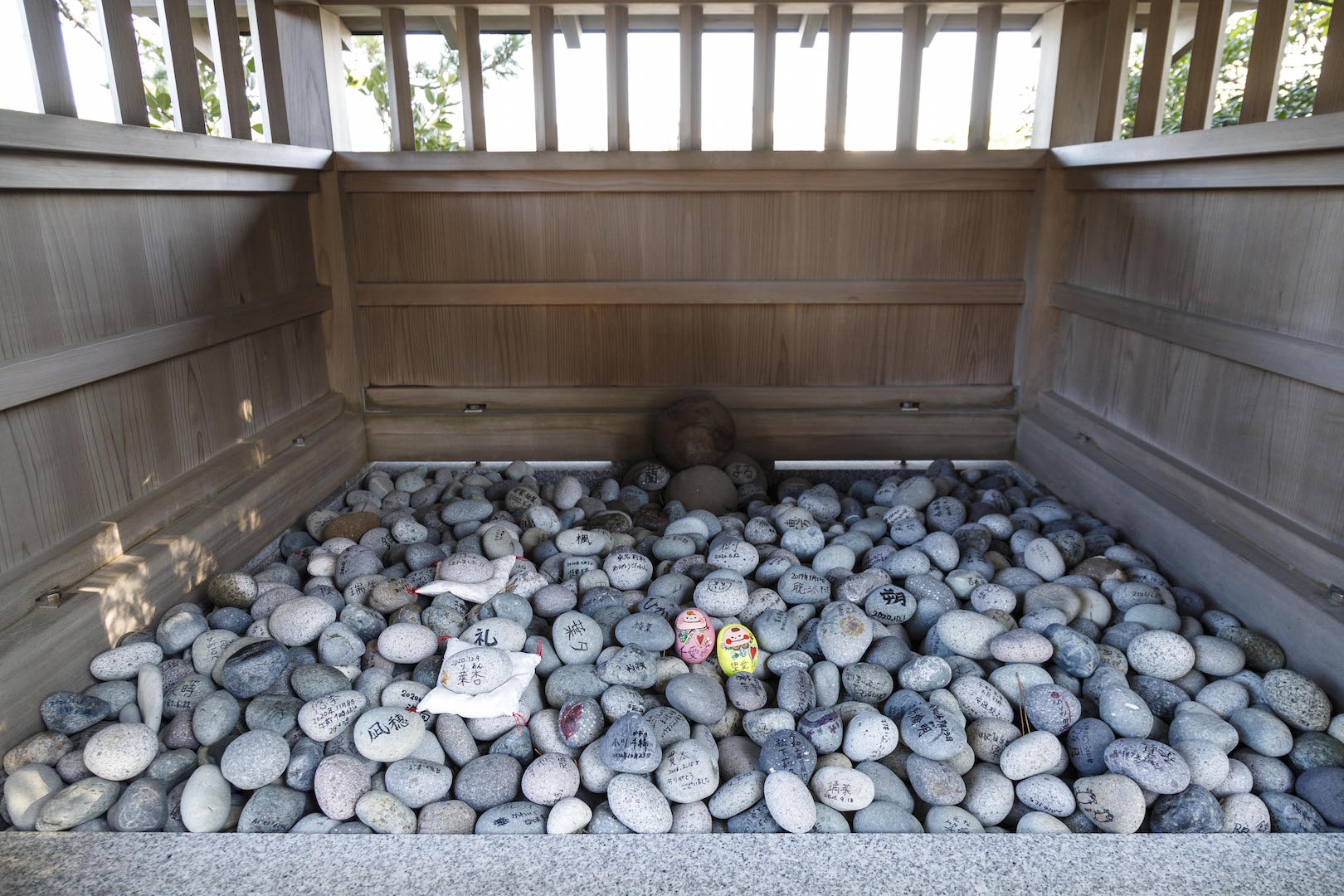
Chikurei-sha Shrine is a miniature shrine that was once revered as a source of healing for sick cattle.
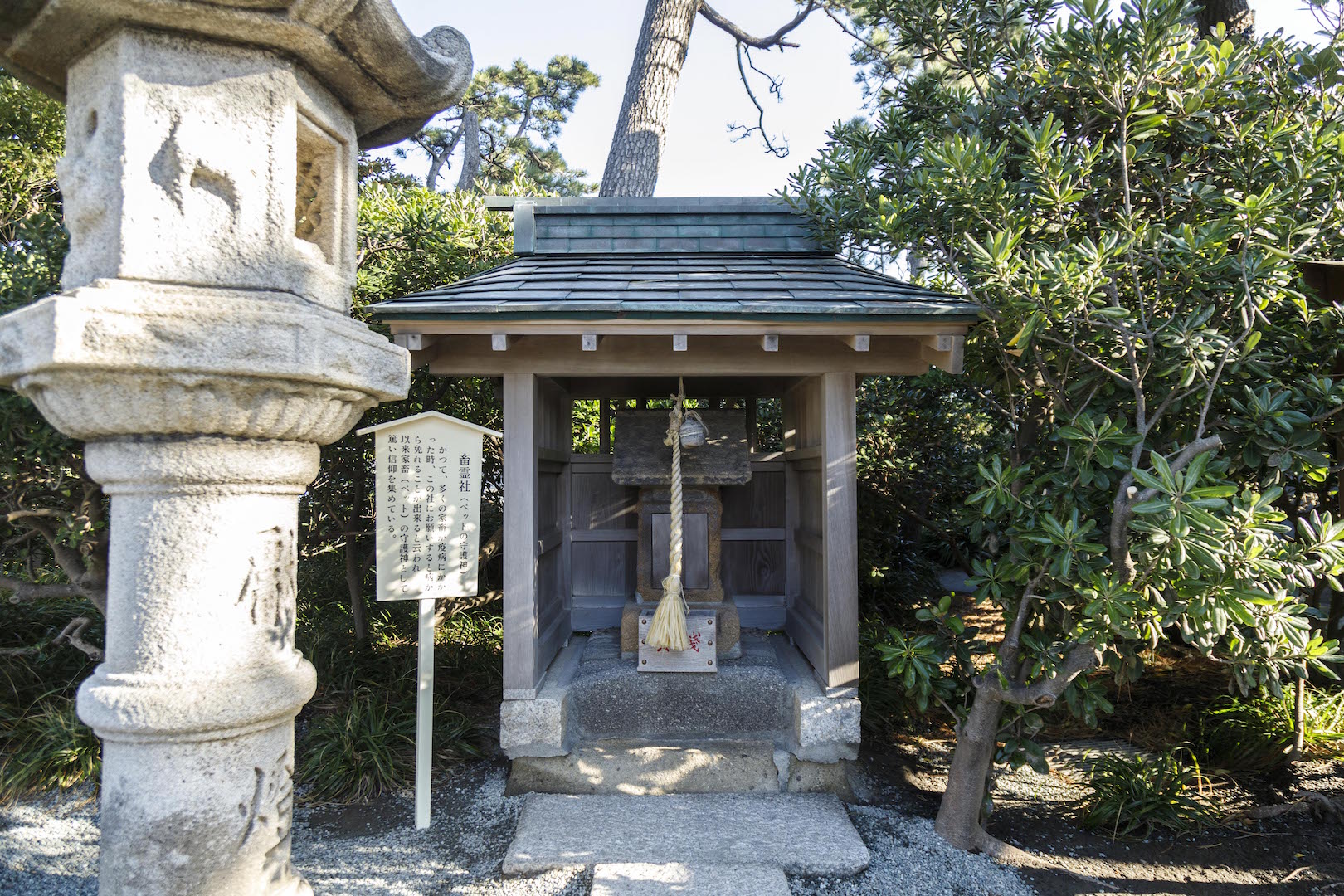
Today, it is revered for the protection of pets, and many Ema (wooden plaques) are dedicated at the miniature shrine.

On top of a rock behind the main hall, the magnificent pine tree called Sengan-matsu is firmly rooted. The Morito Coast is located in an area with some of the oldest rocks and geology on the Miura Peninsula, and this rock reef may be considered a so-called “power spot,” where such old geological formations are exposed.
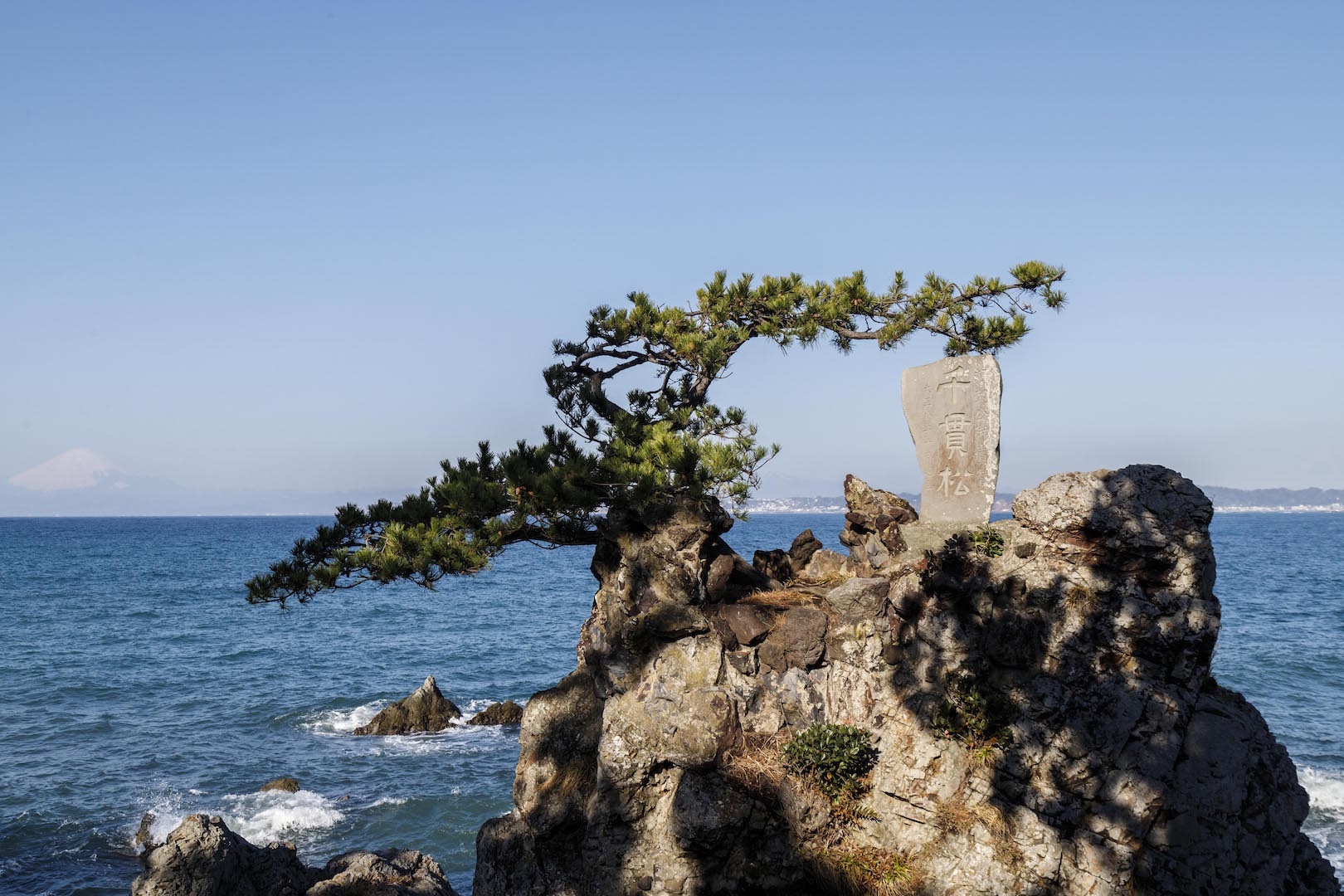
According to legend, the seed of the sacred juniper tree that proudly stands near the shrine flew from the Mishima Taisha Shrine with Yoritomo when he came to worship. The view of such an ancient tree spreading its branches over the sea is so rare that it is designated as a natural monument of Hayama-machi.

■Morito Daimyojin Shrine
[Address] 1025 Horiuchi, Hayama-machi
[Tel] 046-875-2681
[Visiting Hours] 24 hours/day
* Click here for the official website of Morito-jinja Shrine.
Zeniarai Benzaiten Ugafuku-jinja Shrine
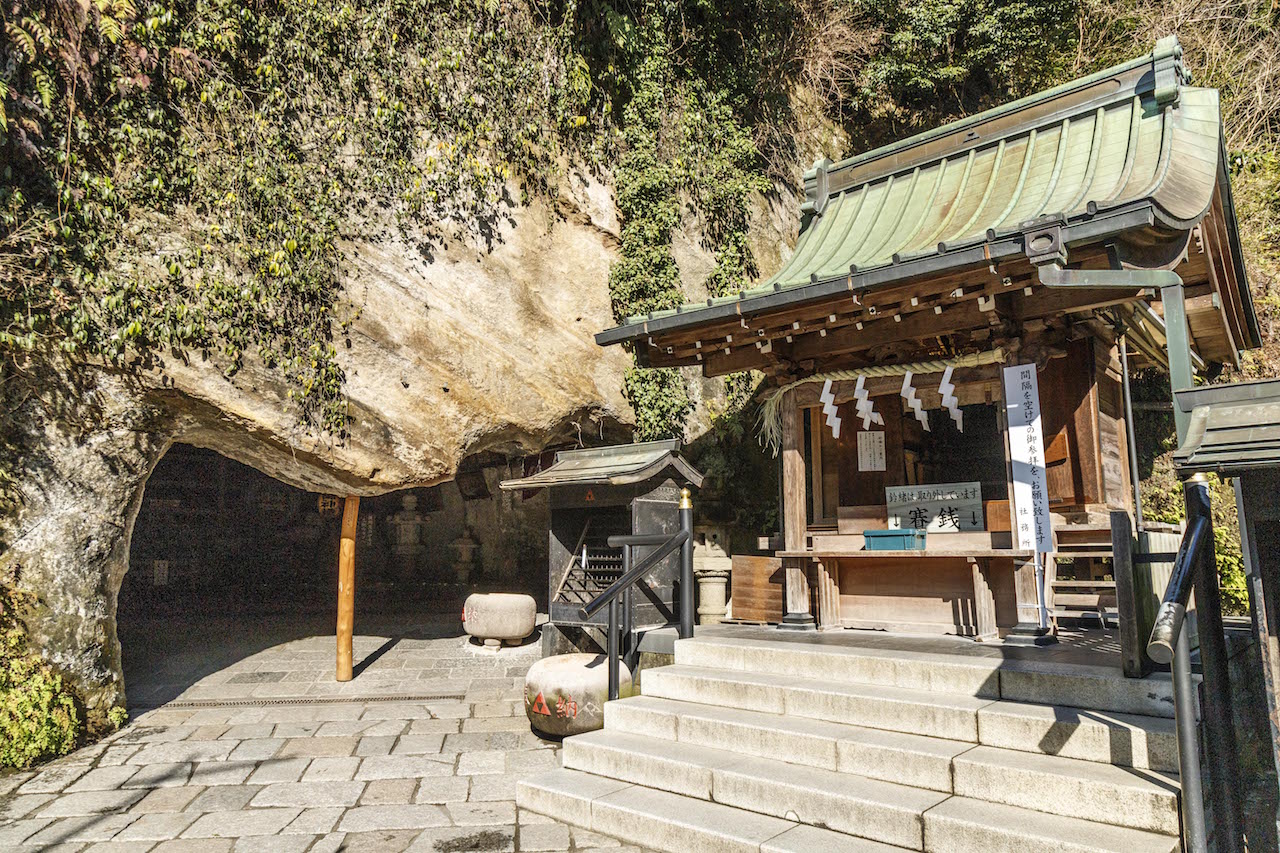
Commonly known as Zeniarai Benten, this is one of the most famous shrines in Kamakura. Stories say that Minamoto no Yoritomo, who founded the Kamakura shogunate, had a revelation in a dream that “if he honors the gods and Buddha with the water that springs from the land, then the world will become peaceful.” Thus he created the shrine to Ugajin here. Later, Hojo Tokiyori, the fifth regent used the miraculous spring water to wash his money and prayed for the prosperity of his clan. This is how the folk belief “if you wash your money in the spring water there, it will multiply” was born.
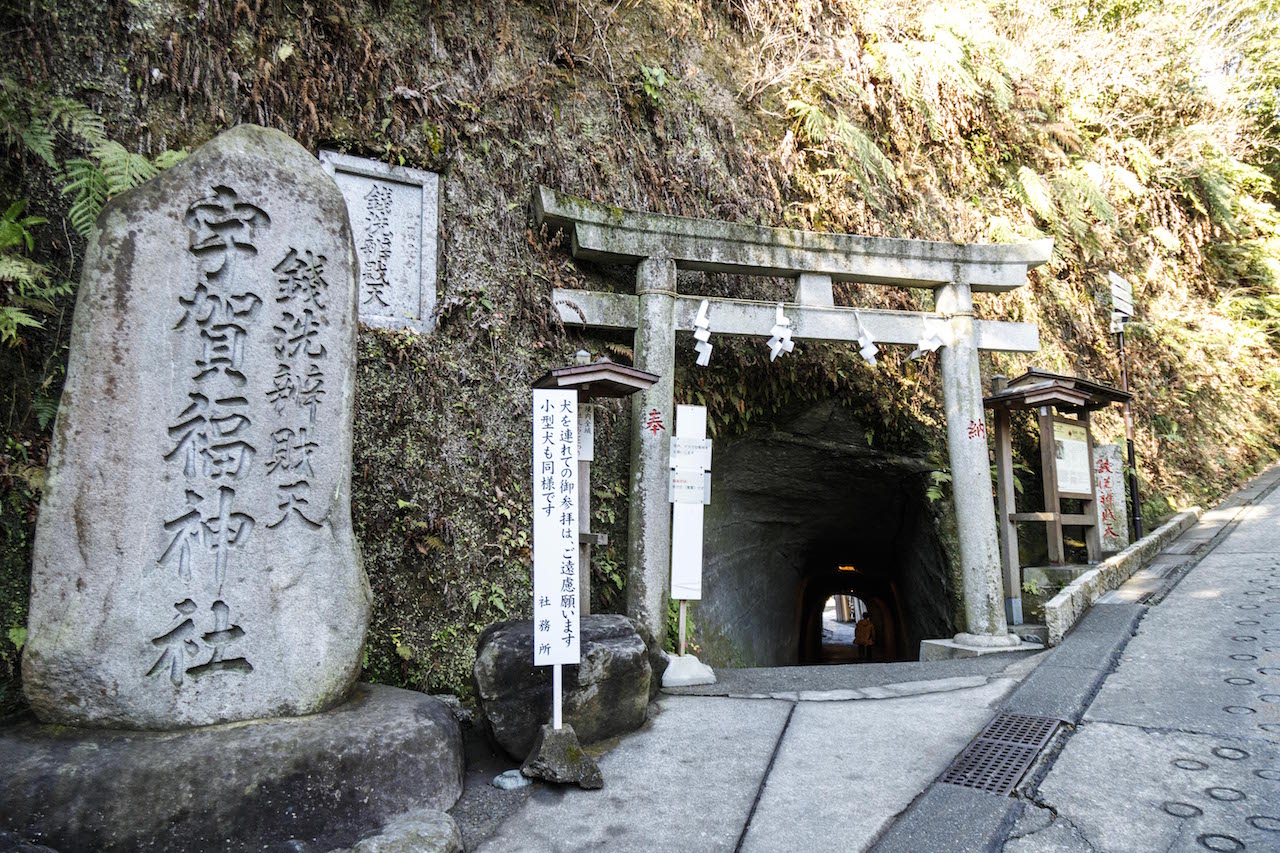
This tunnel is the entrance to the grounds of the shrine. After passing through the stone tunnel, another tunnel of torii gates awaits.
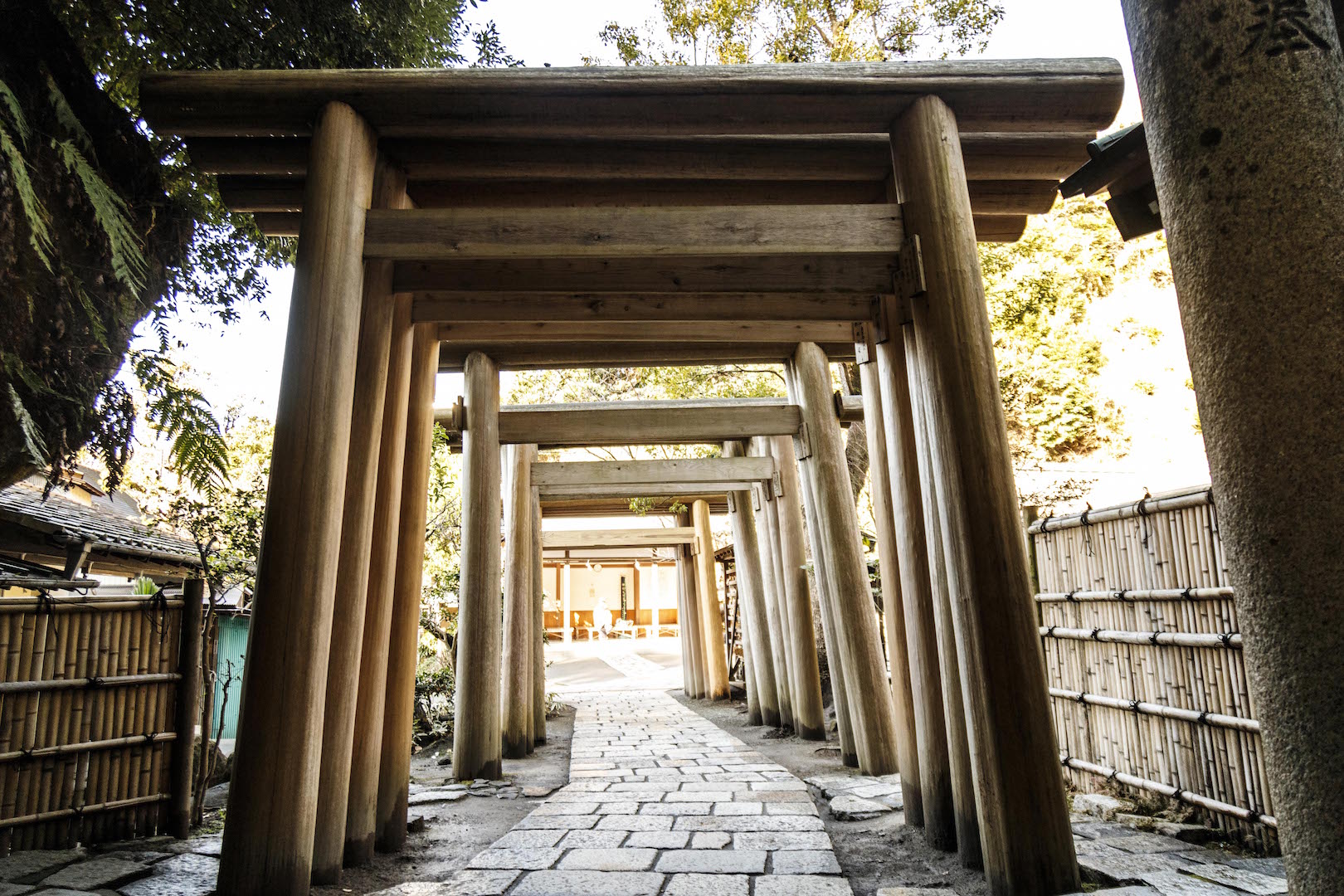
As the shrine is surrounded by steep cliffs, it has a calm atmosphere and feeling of isolation from the outside world. We recommend buying an incense stick and candle as well as borrowing a basket to wash your money.
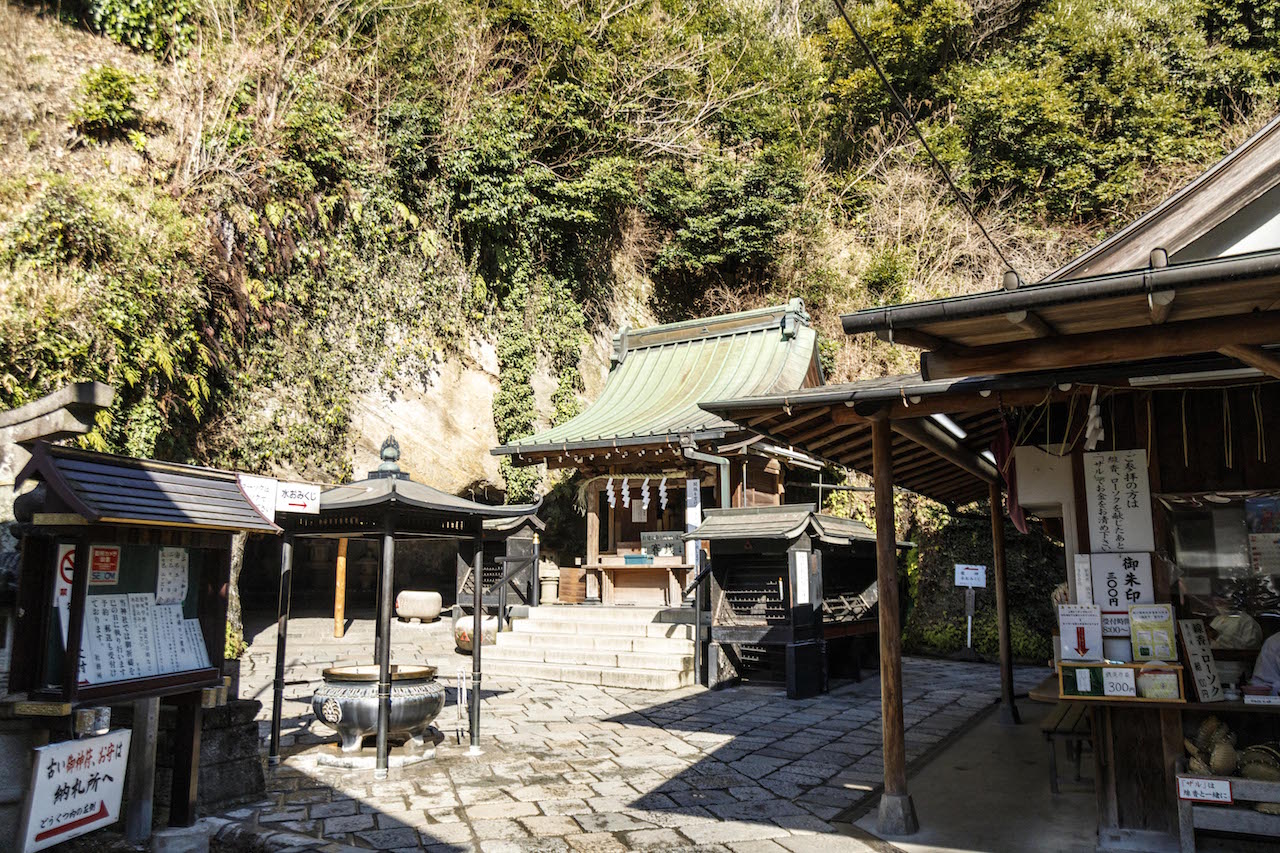
Offer the incense stick and candle after lighting them at the large candle to the side of the main hall.
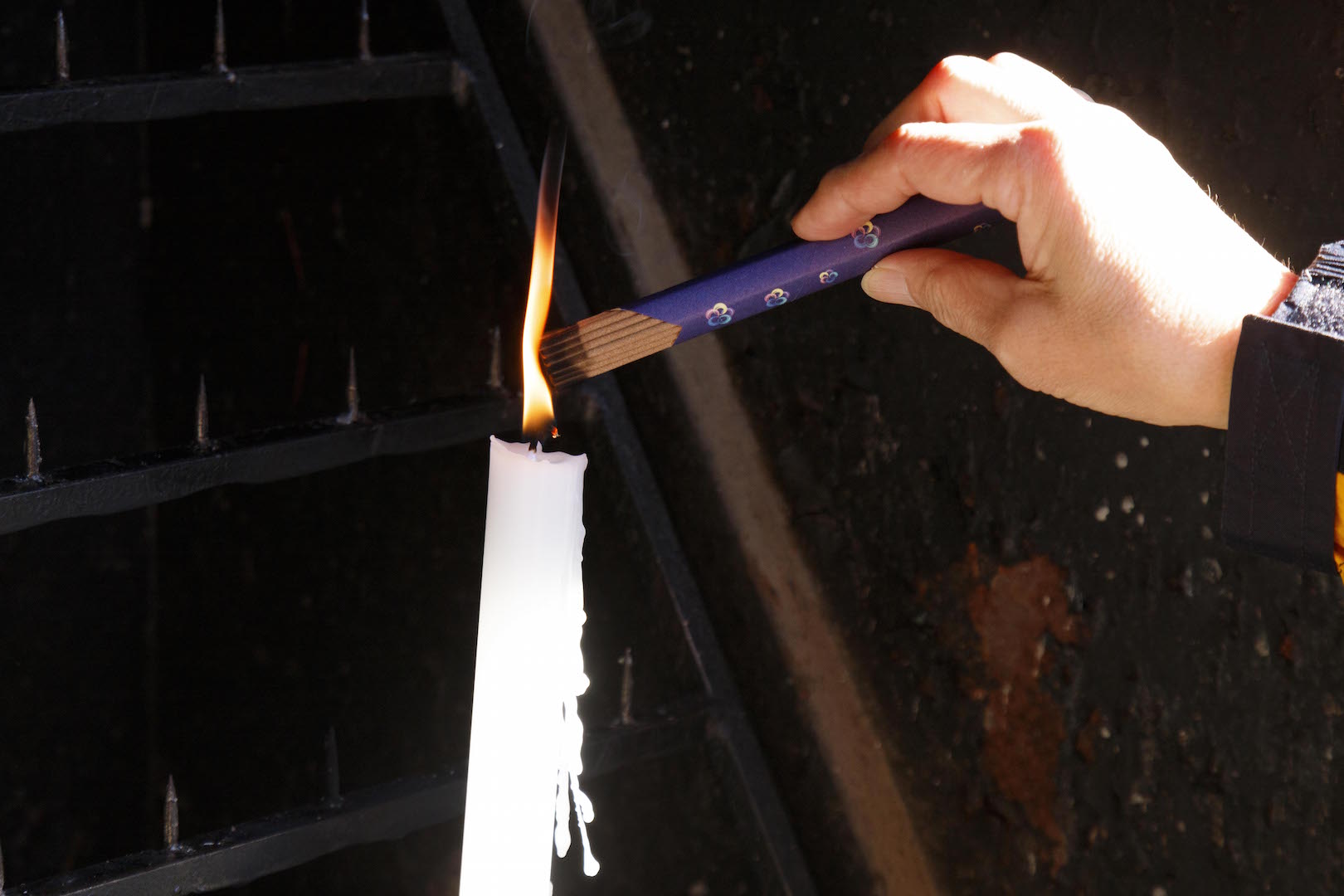
The source of the miraculous spring begins in a miniature shrine which is housed in a cave. Ugajin and Benzaiten are enshrined there.
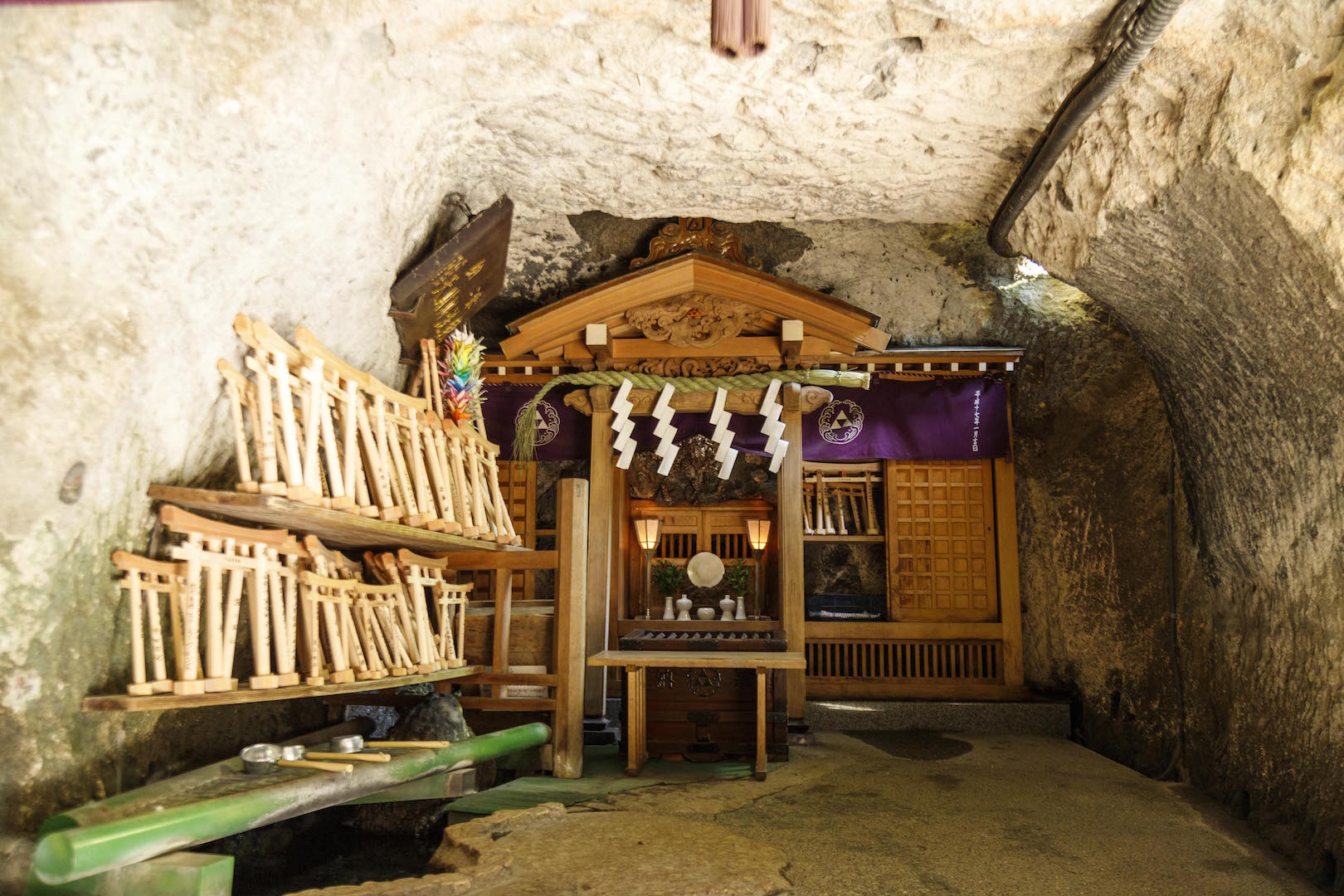
After praying, place your money in the basket, then pour water over it with a ladle to purify it. The purified money is said to “multiply and return to you,” so do not hold onto it, but spend it.
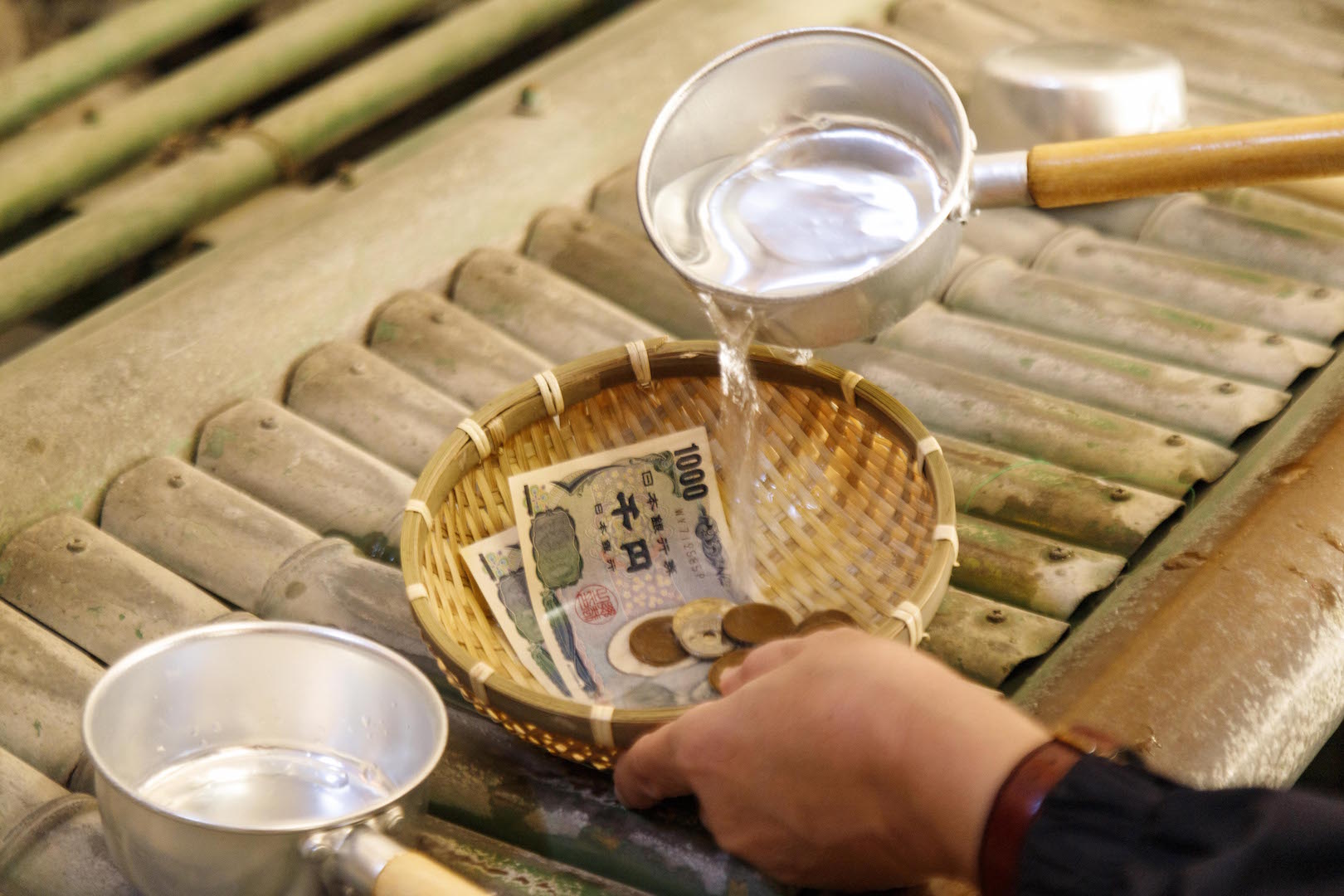
Across from the shrine office, three gods, Shichifuku-jin, Kamino-suijin, and Shimono-suijin are enshrined. There is a waterfall fed by a spring near Shimono-suijin, so it feels good to enjoy the pure and clear air here.
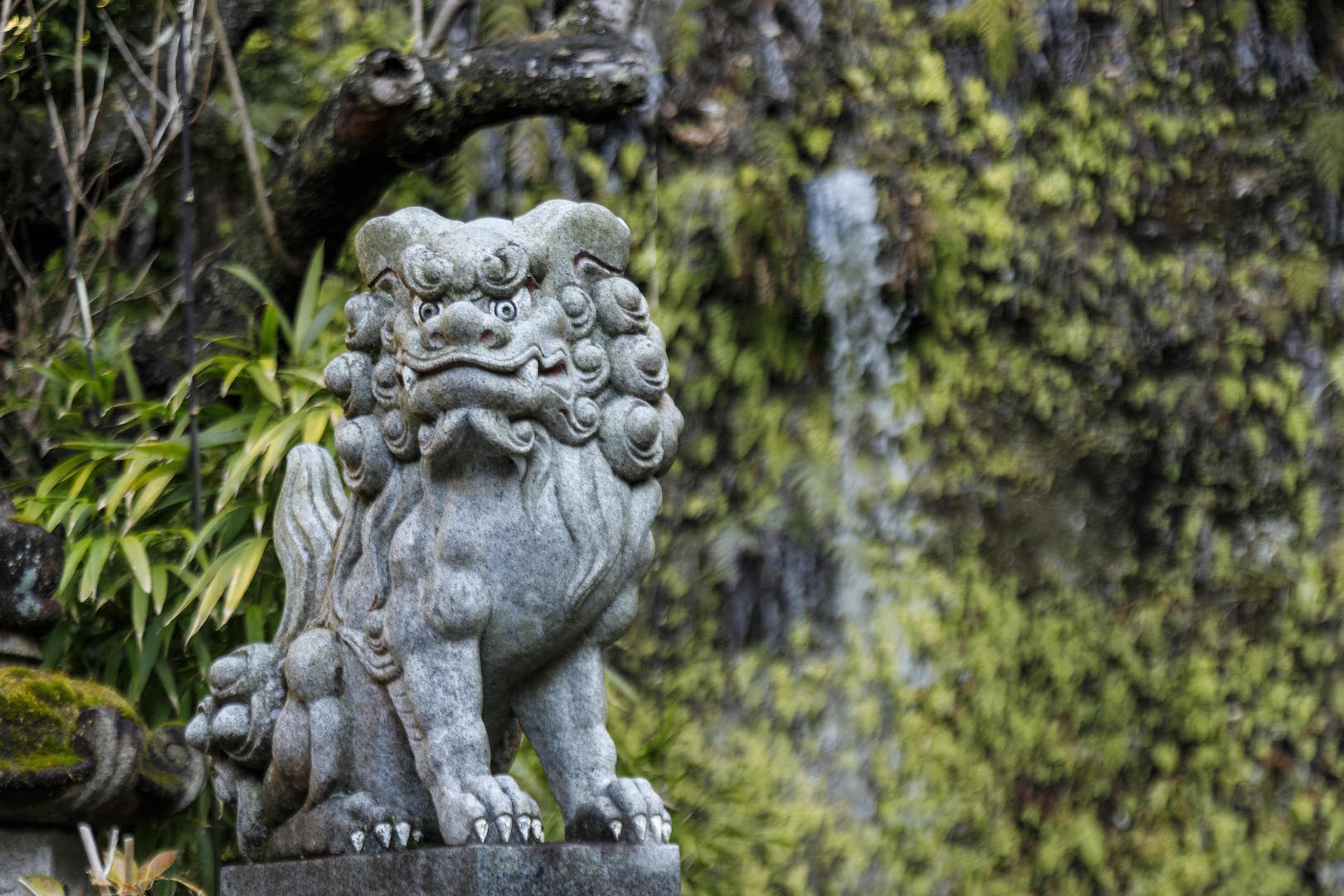
■Zeniarai Benzaiten Ugafuku-jinja Shrine
[Address] 2-25-16 Sasuke, Kamakura-shi
[Tel] 0467-25-1081
[Visiting Hours] 8:00 a.m. - 4:30 p.m.
Enoshima-jinja Shrine
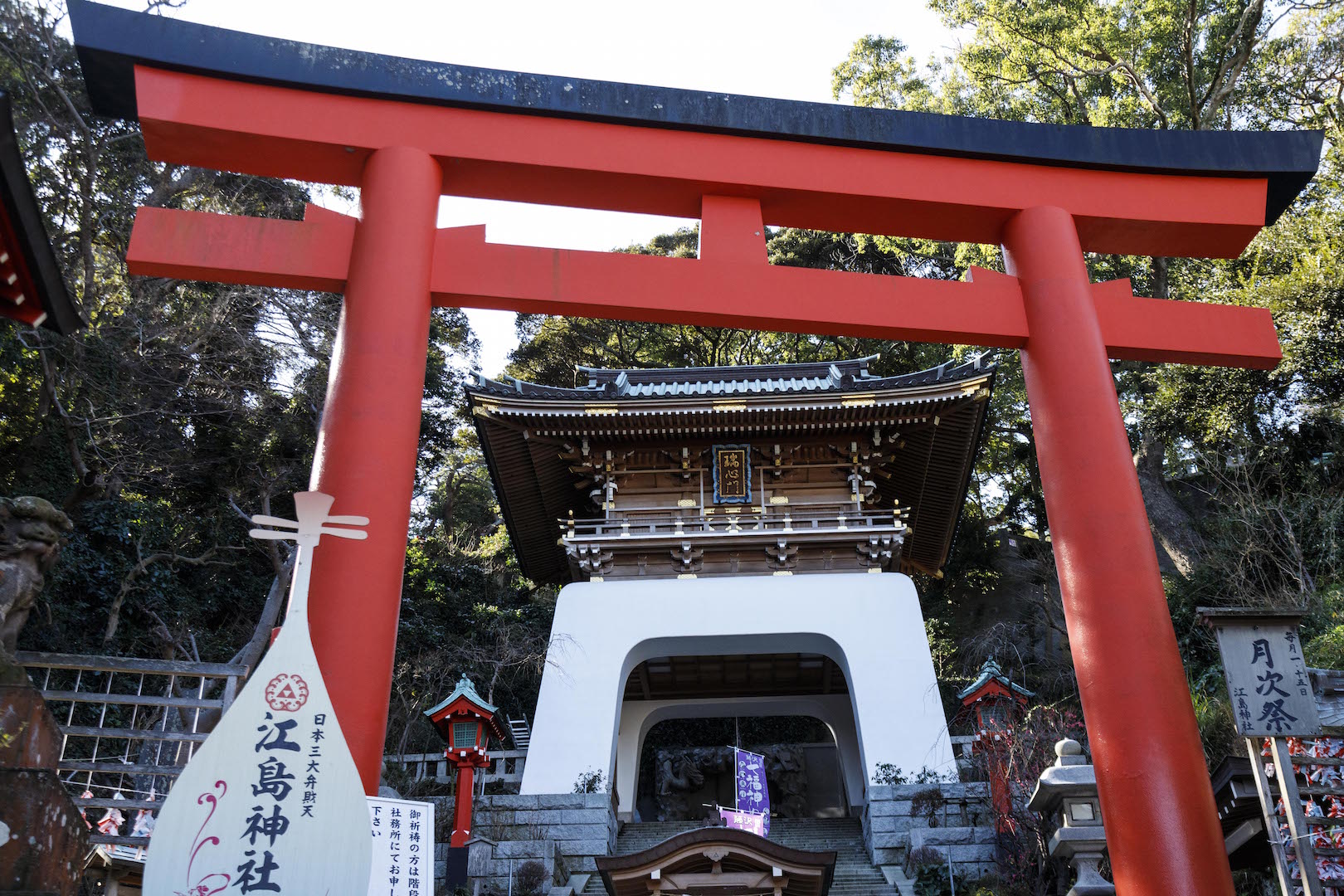
Enoshima-jinja Shrine consists of three shrines, Hetsumiya, Nakatsumiya, and Okutsumiya, enshrining three sister goddesses. They are a goddess of the sea, a goddess of water, and a goddess to bring luck and good fortune and are revered by those who wish to improve their skills in the arts. The shrine is also a popular sightseeing spot in Shonan.
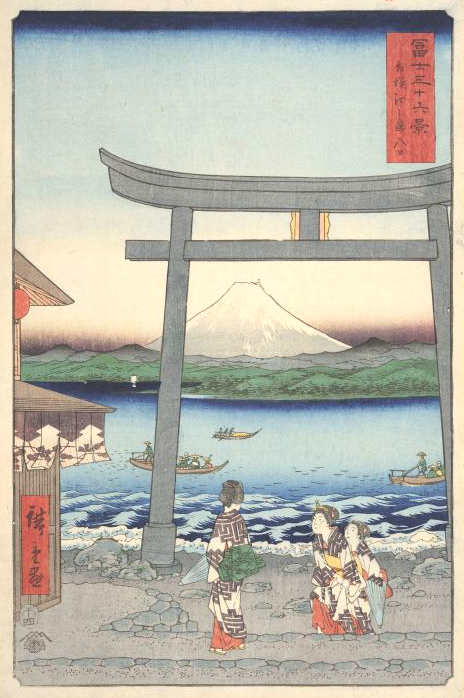
* “Fuji Sanjurokkei: Sagami Enoshima Iriguchi” by Hiroshige Utagawa Image provided by Kanagawa Prefectural Museum of Cultural History
During the Edo period when visiting Enoshima Benzaiten was popular, many artists including Hiroshige Utagawa chose the place as a theme for their ukiyo-e artwork. The bronze torii gate at the entrance to Enoshima was rebuilt in 1821 (though it was originally built in 1747). The torii in the ukiyo-e painting is supposed to be this one, but it looks like it is made of stone in the ukiyo-e painting.
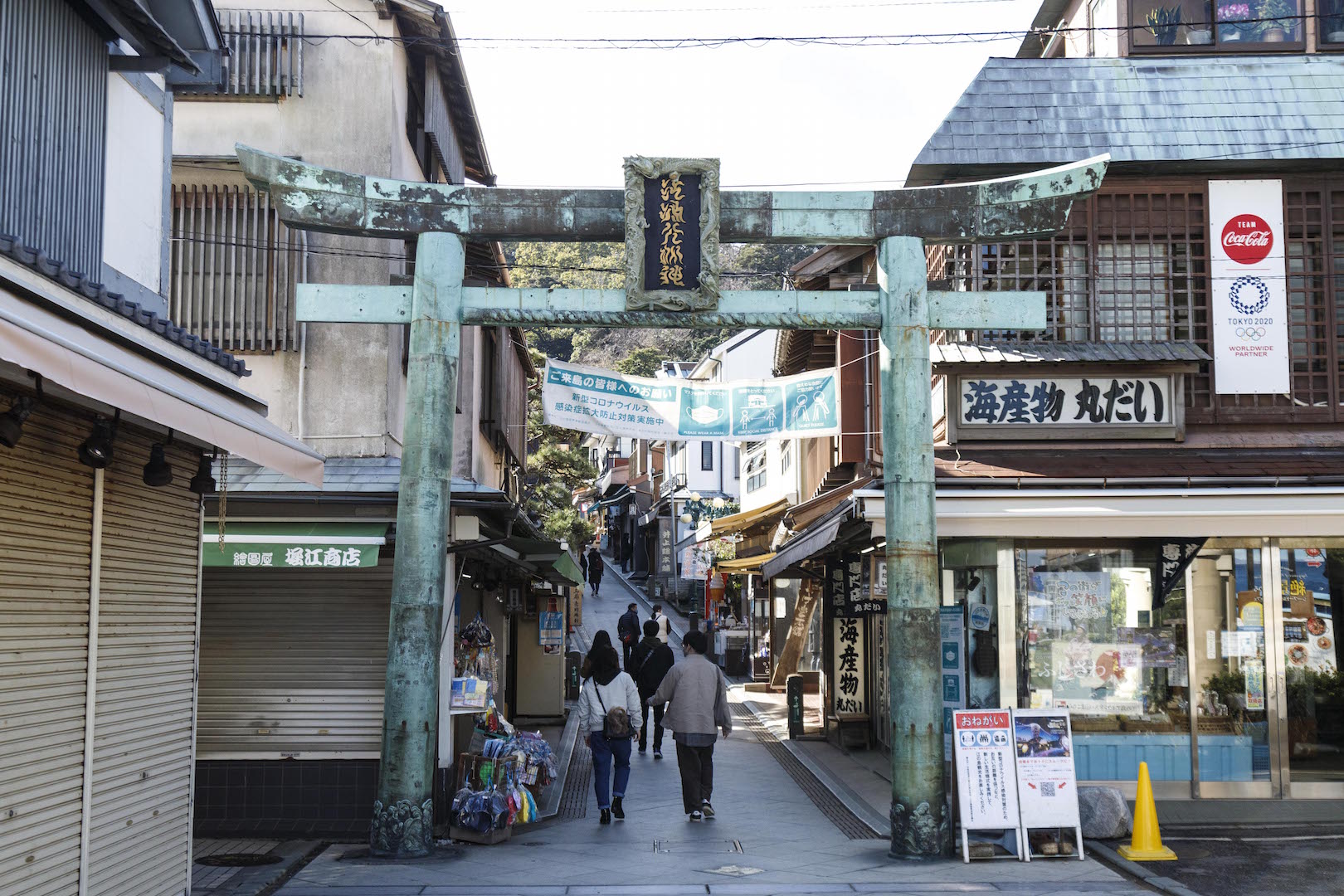
After passing through the approach which is approximately 2.75 m wide, through the vermilion torii and up the stairs, you’ll be welcomed by Hetsumiya. Hetsumiya was built in 1206, which makes it the newest shrine of the three.
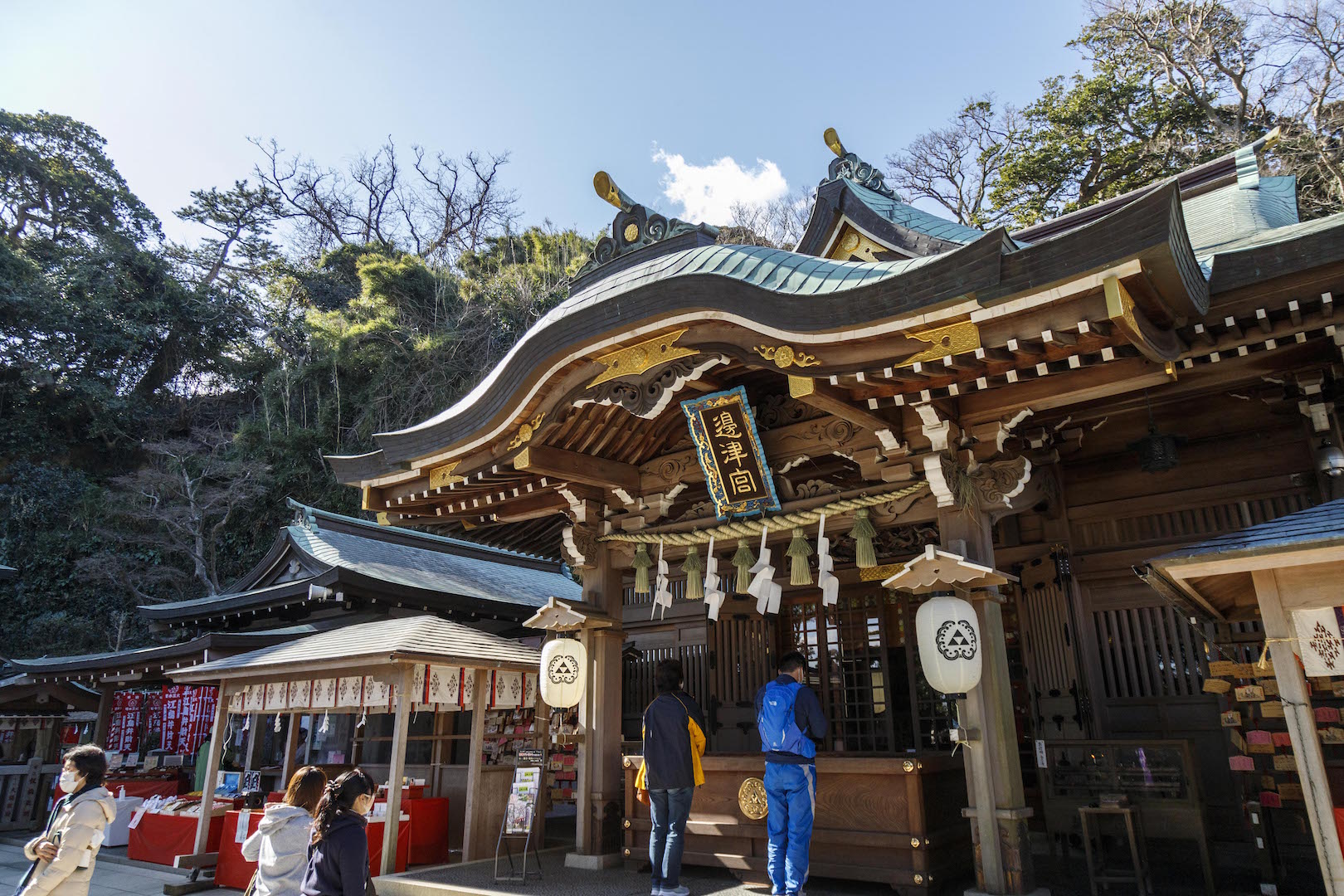
Farther ahead, after climbing the stairs from Hetsumiya is Nakatsumiya, built in 853. The current building is the one rebuilt by Tokugawa Tsuneyoshi, the fifth shogun, in 1689. Overall refurbishment was done in 1996, which brought back the bright vermilion color from when it was rebuilt originally.
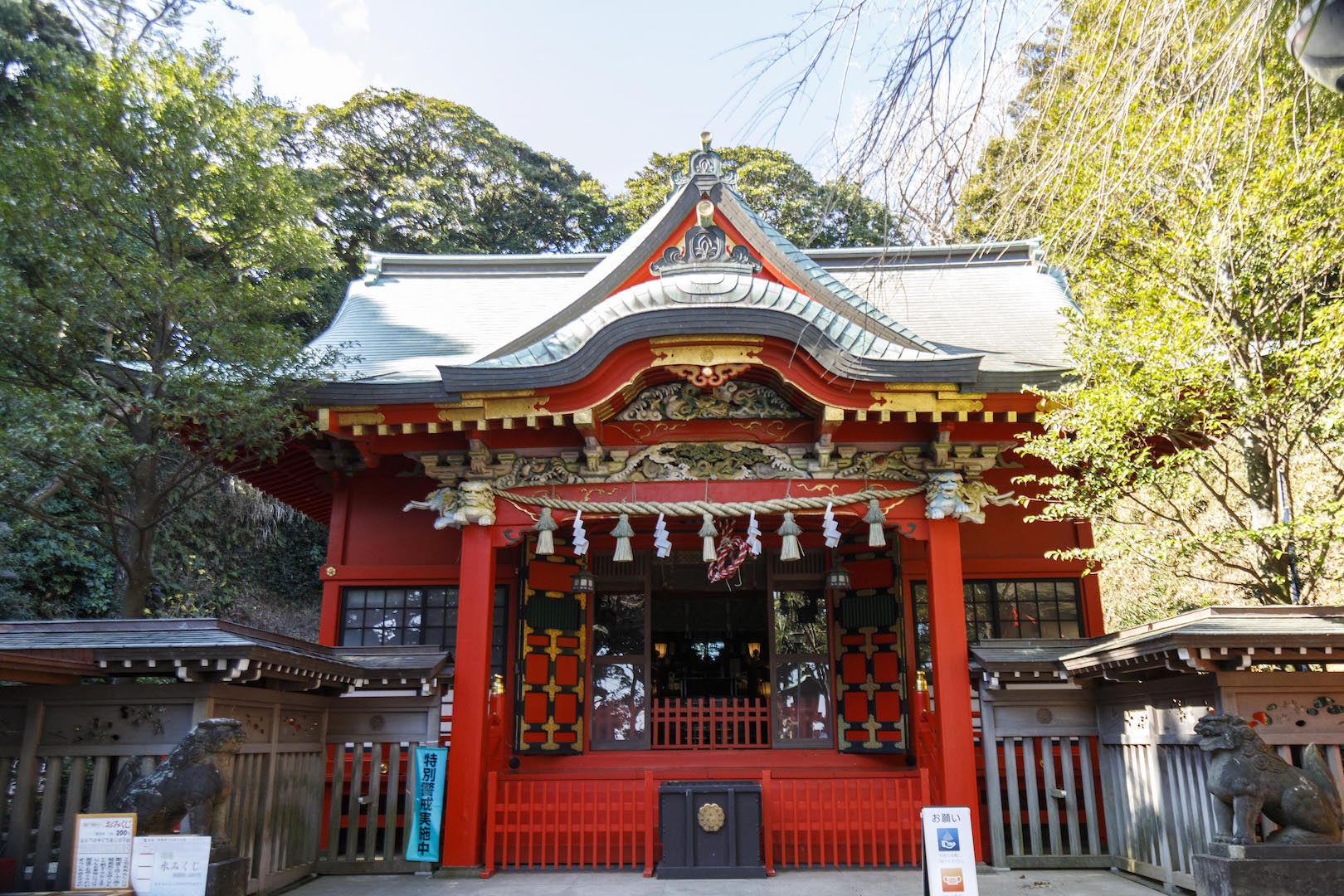
From Nakatsumiya, you can see the entire harbor and blue ocean below you.
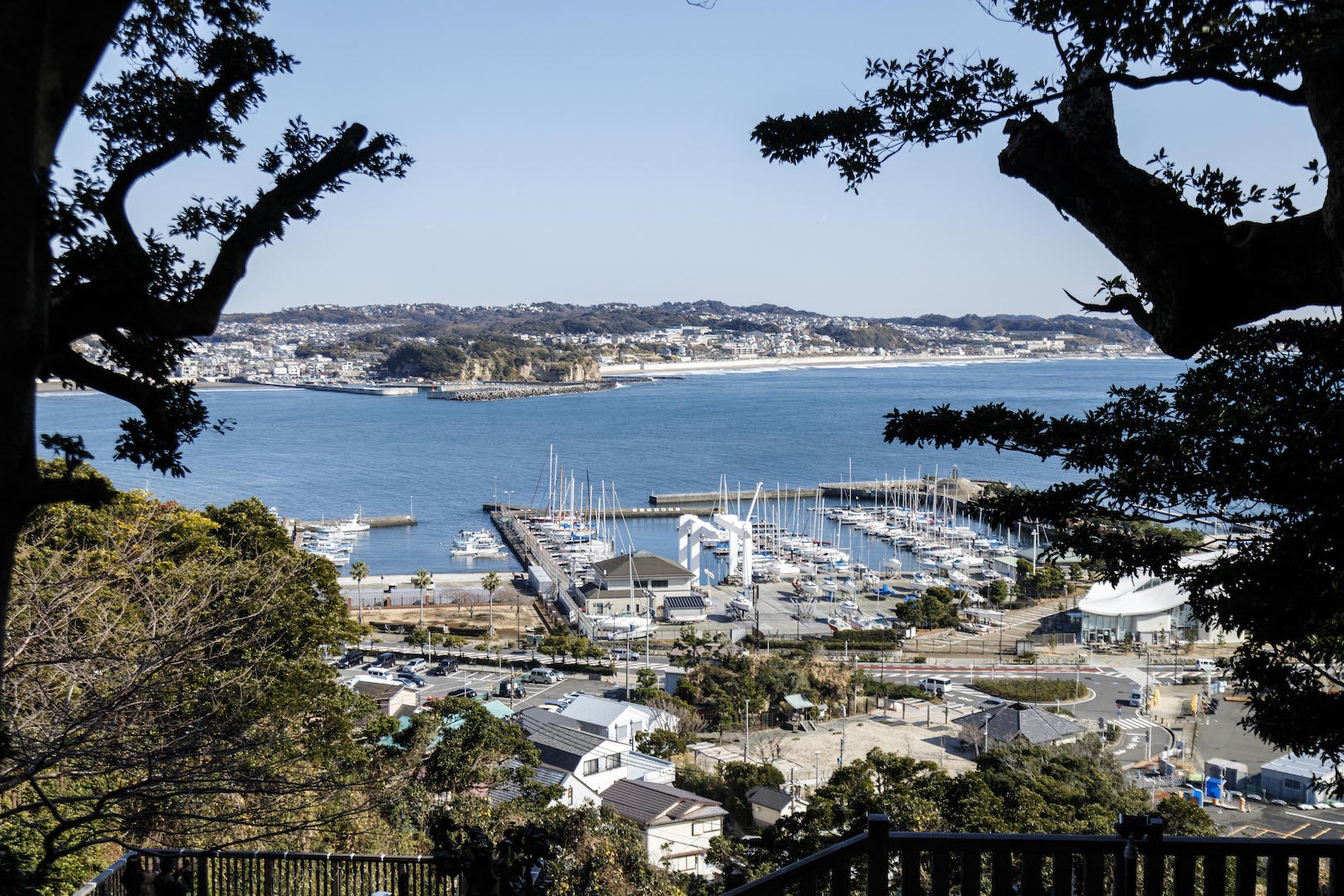
Take the path over the slopes for about 10 minutes to get to Okutsumiya. There is an area where traditional souvenir shops can be found, so the walk almost feels like a trip back in time.
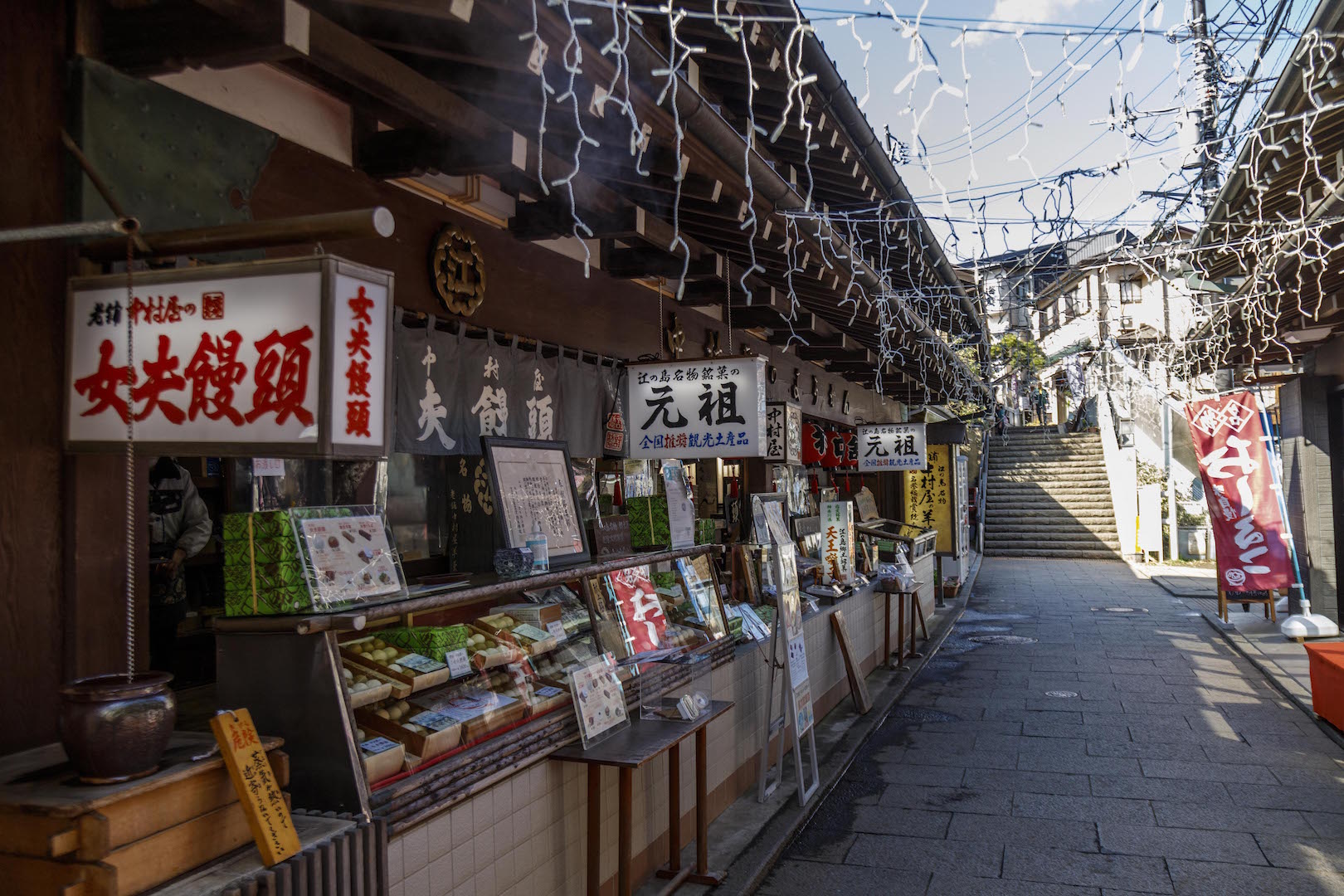
Okutsumiya was originally an otabisho, a place for a mikoshi to rest in the middle of a ritual procession. From April to October, the grotto where the main shrine was, becomes inundated by seawater. In order to prevent Benten from being submerged by the waves, Benten is now enshrined at Okutsumiya. The original building, which was said to have been of the utmost magnificence, burned down in 1841. The current building was rebuilt the following year.
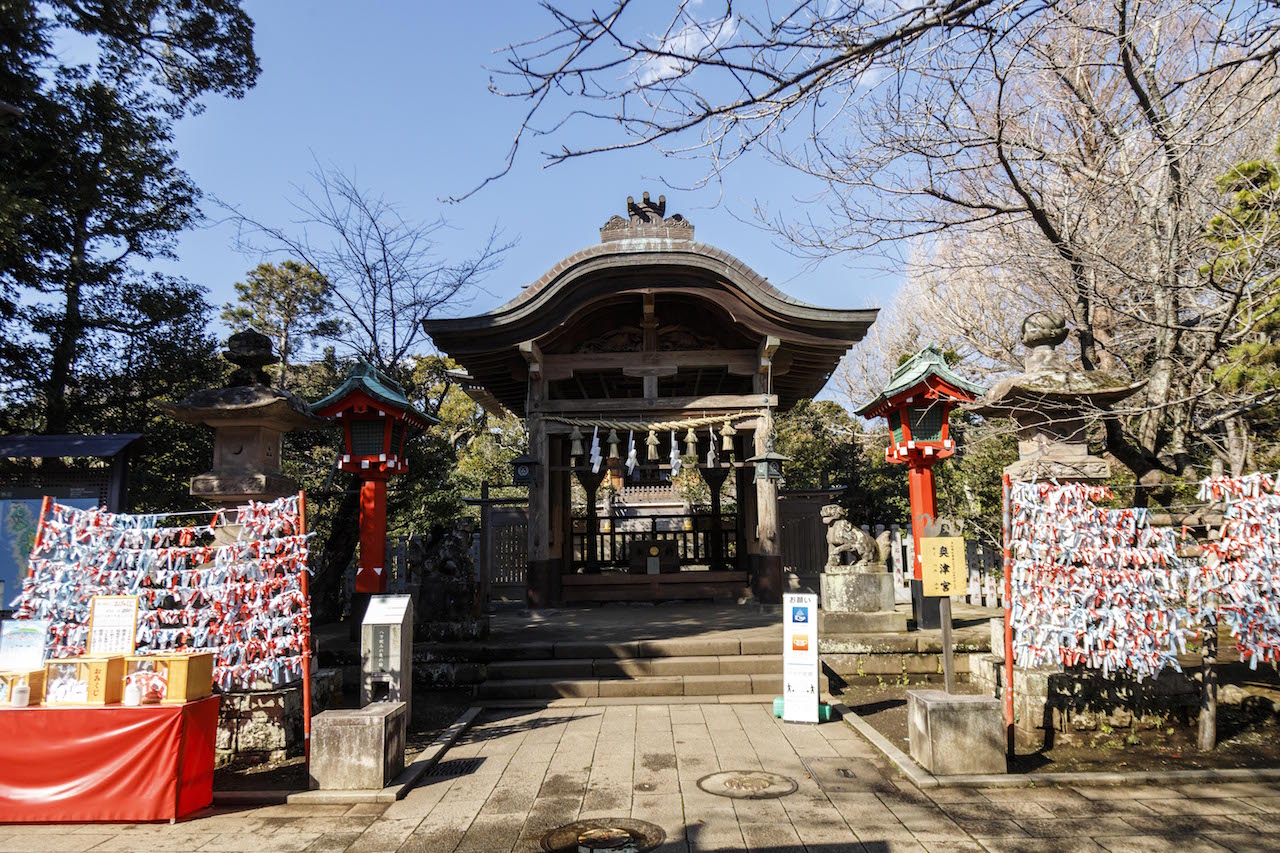
It takes about 10 minutes descending a steep stairway from Okutsumiya to reach the grotto, the birthplace of Enoshima-jinja Shrine. There are the first grotto and second grotto, which were both made by erosion from waves. They will surely fill you with a sense of wonder.

The coast along the grottoes has a spectacular view of Mt. Fuji, so make sure to pick a nice clear day.
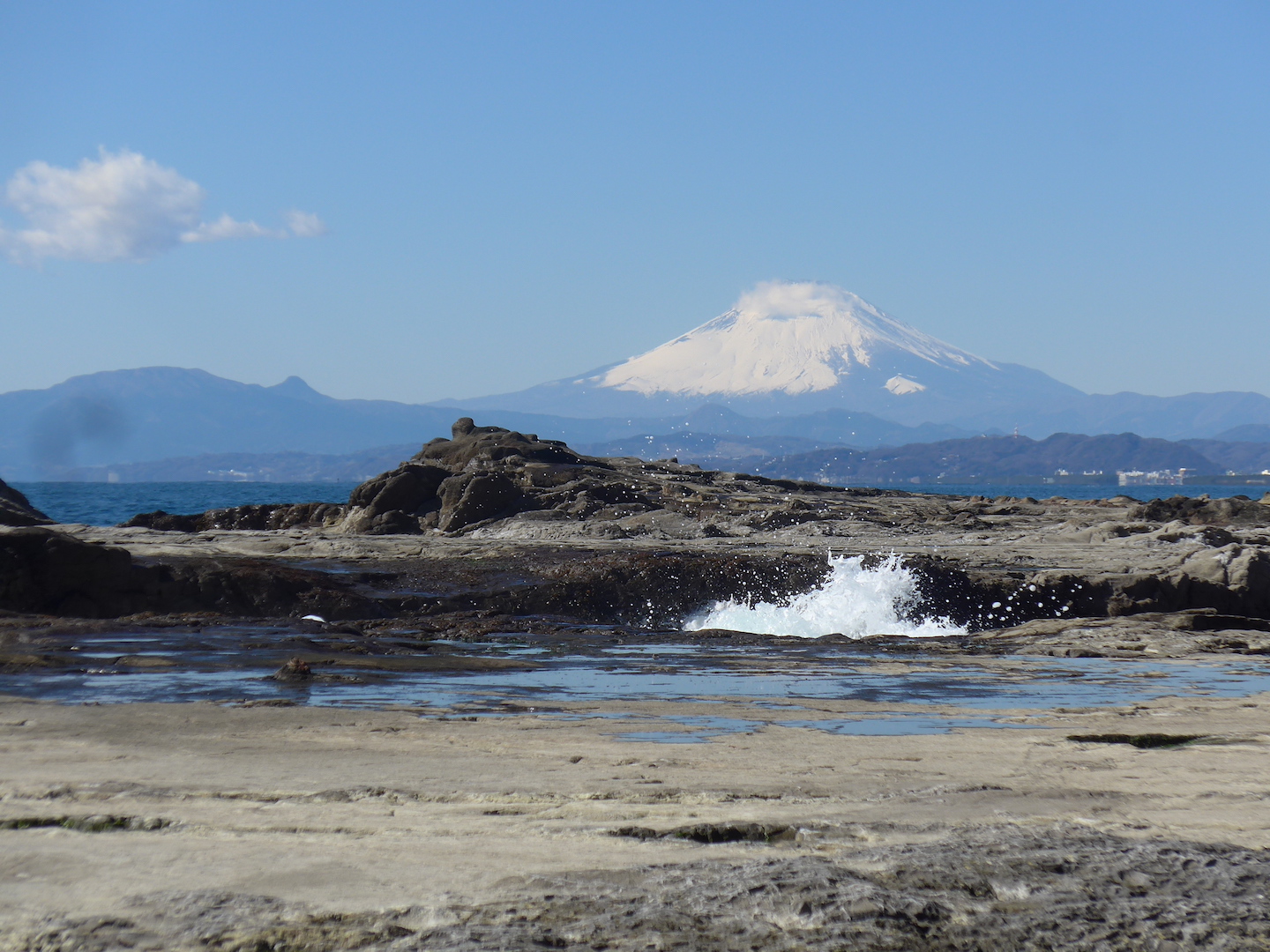
The great thing about the return trip is the gourmet seafood you can taste at restaurants lined up along the approach. Shirasu-don (whitebait rice bowl) has been popular lately, but if you’d like to try out a traditional taste, we recommend Enoshima-don, sea snail and egg rice bowl.

■Enoshima-jinja Shrine
[Address] 2-3-8 Enoshima, Fujisawa-shi
[Tel] 0466-22-4020
[Visiting Hours] 8:30 a.m. - 5:00 p.m.
* Click here for the official website of Enoshima-jinja Shrine.
Yugyoji Temple
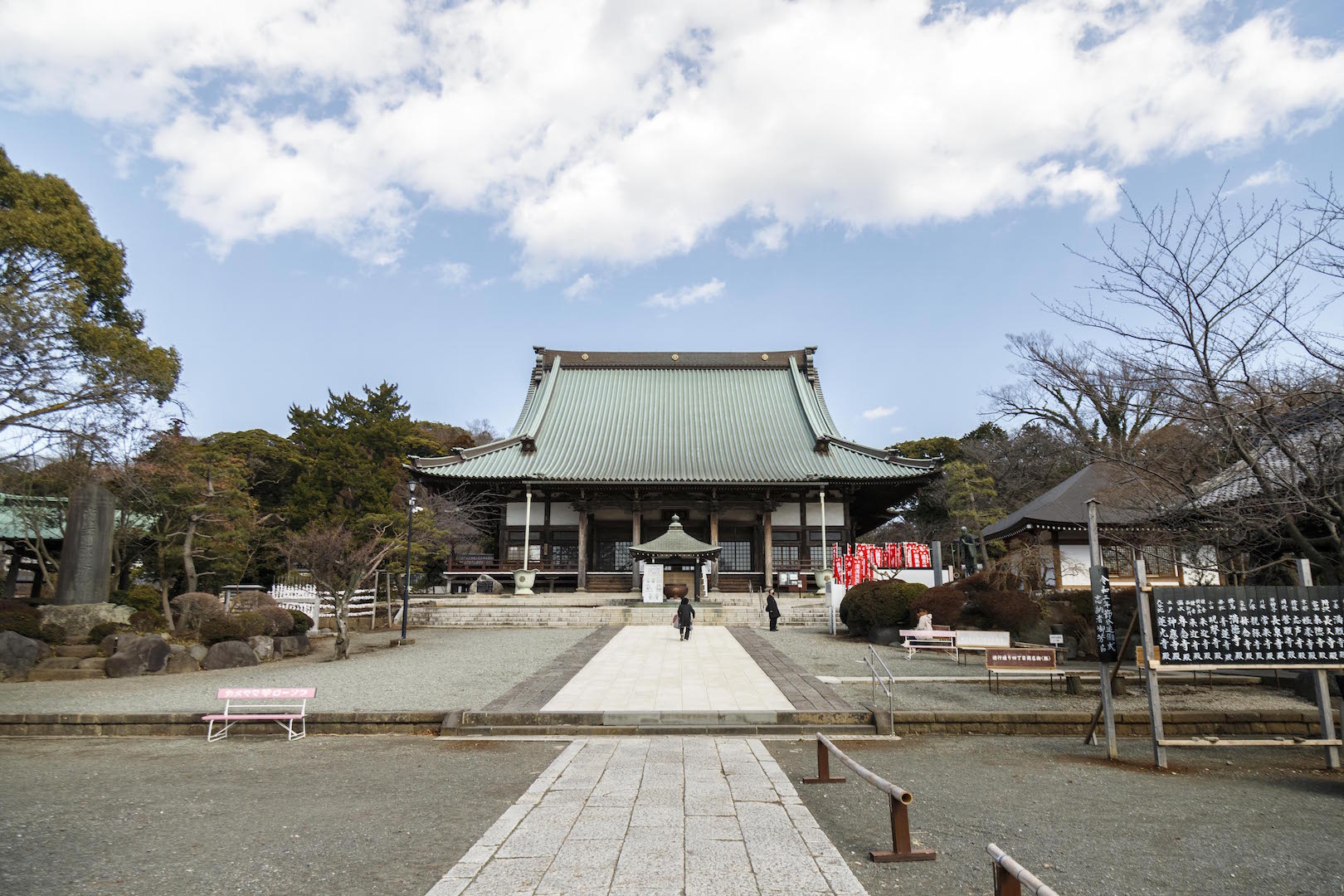
The official name is Totakusan Muryokoin Shojokoji. Ippen Shonin, a founder of a religious sect, dedicated his life to journeys of pilgrimage, or yugyo, to preach and convert people. This is where the name Yugyoji Temple came from. The statue of Ippen Shonin is a symbol of Yugyoji Temple.
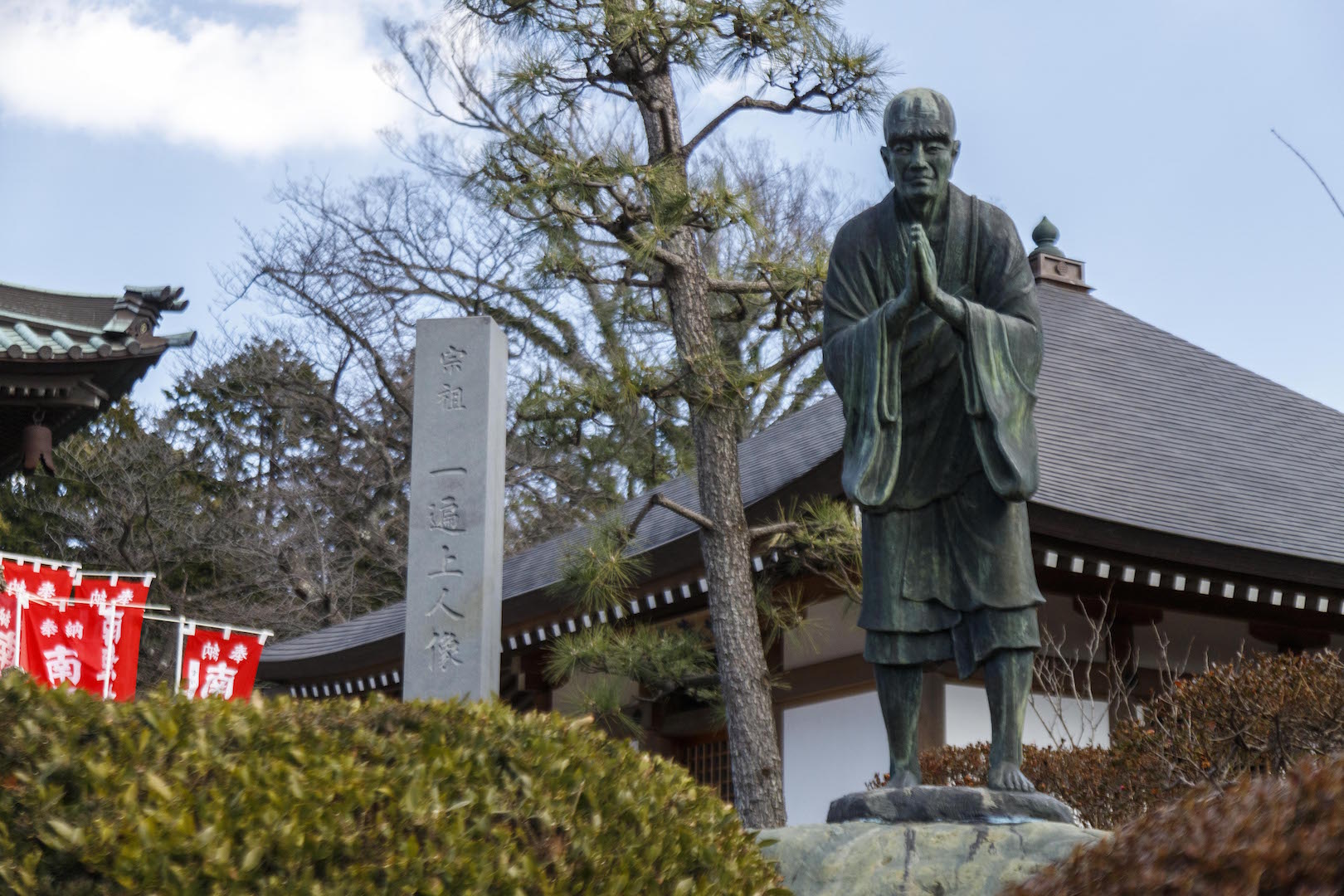
In the modern period, the area in front of the temple was developed as Fujisawashuku inns. The bustle of the area was often drawn in ukiyo-e works, including “Tokaido Gojusantsugi” by Hiroshige Utagawa.
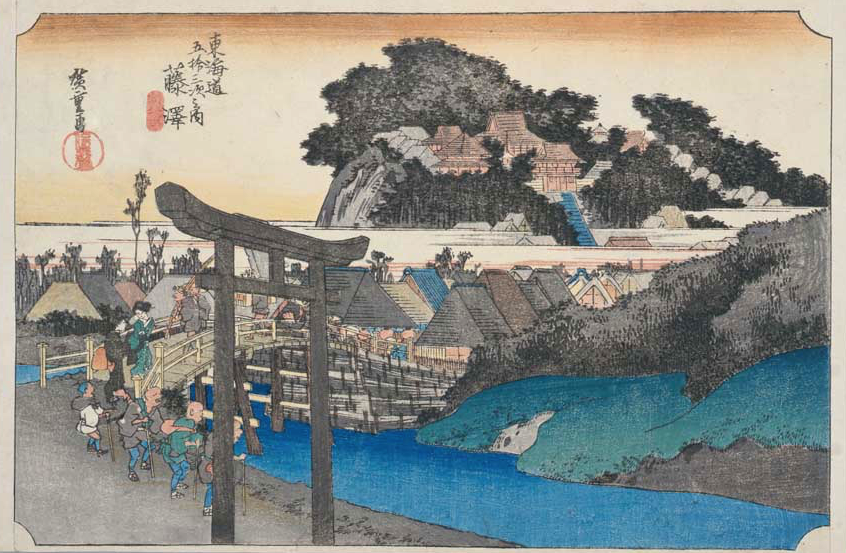
*“Fujisawa” from “Tokaido Gojusantsugi” by Hiroshige Utagawa Image provided by Kanagawa Prefectural Museum of Cultural History
The big torii drawn in the ukiyo-e painting is Ichinotorii of Enoshima Benzaiten (the current Enoshima-jinja Shrine). After crossing the Daigiribashi Bridge (the current Yugyobashi Bridge) came numerous Fujisawashuku inns, and further down is Yugyoji Temple on top of a small mountain.
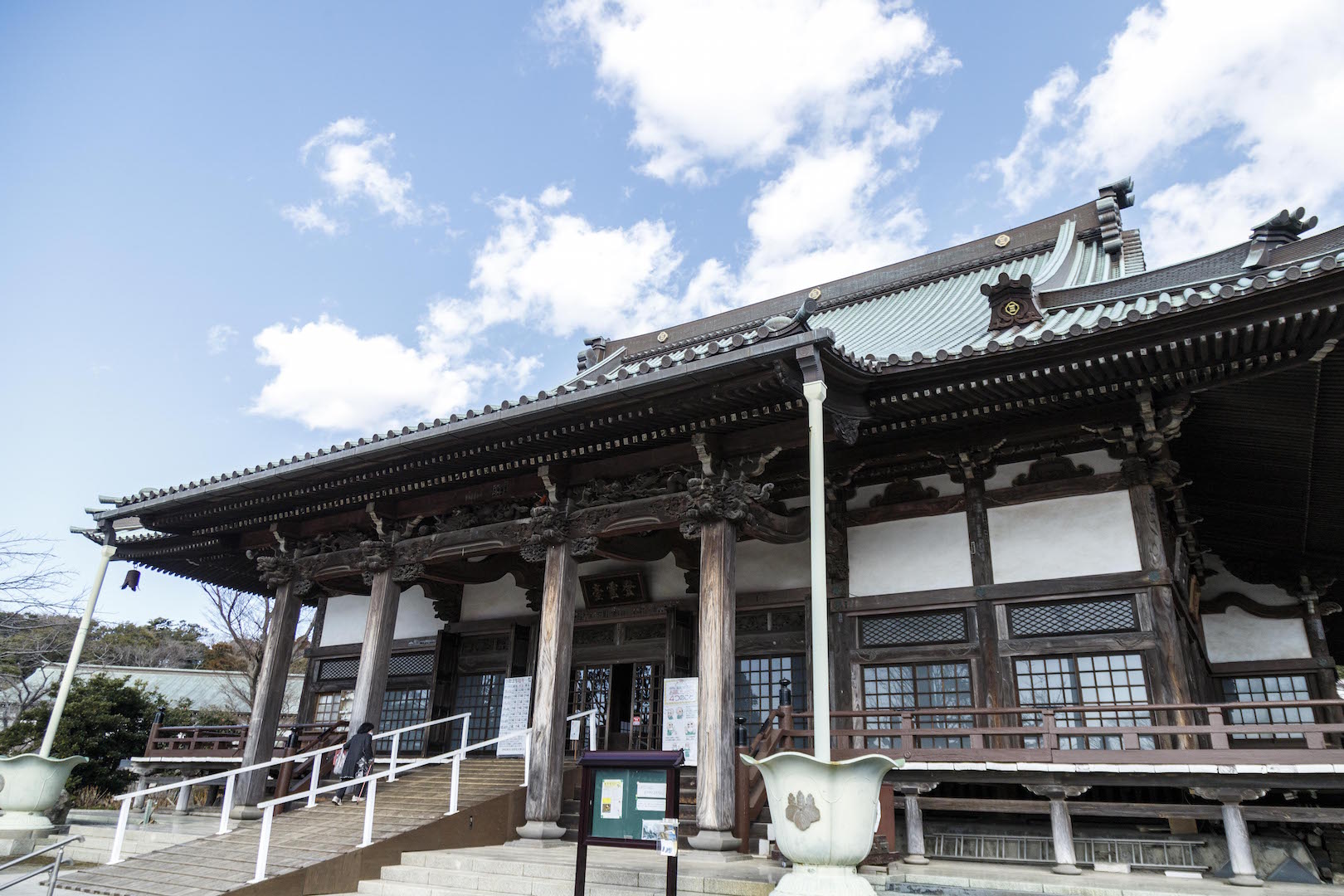
Since its establishment, the building has been burned down repeatedly due to battles and fires, but each time it was reconstructed. The current building was rebuilt in 1937. The 10 temple buildings are all registered as Registered Tangible Cultural Properties.
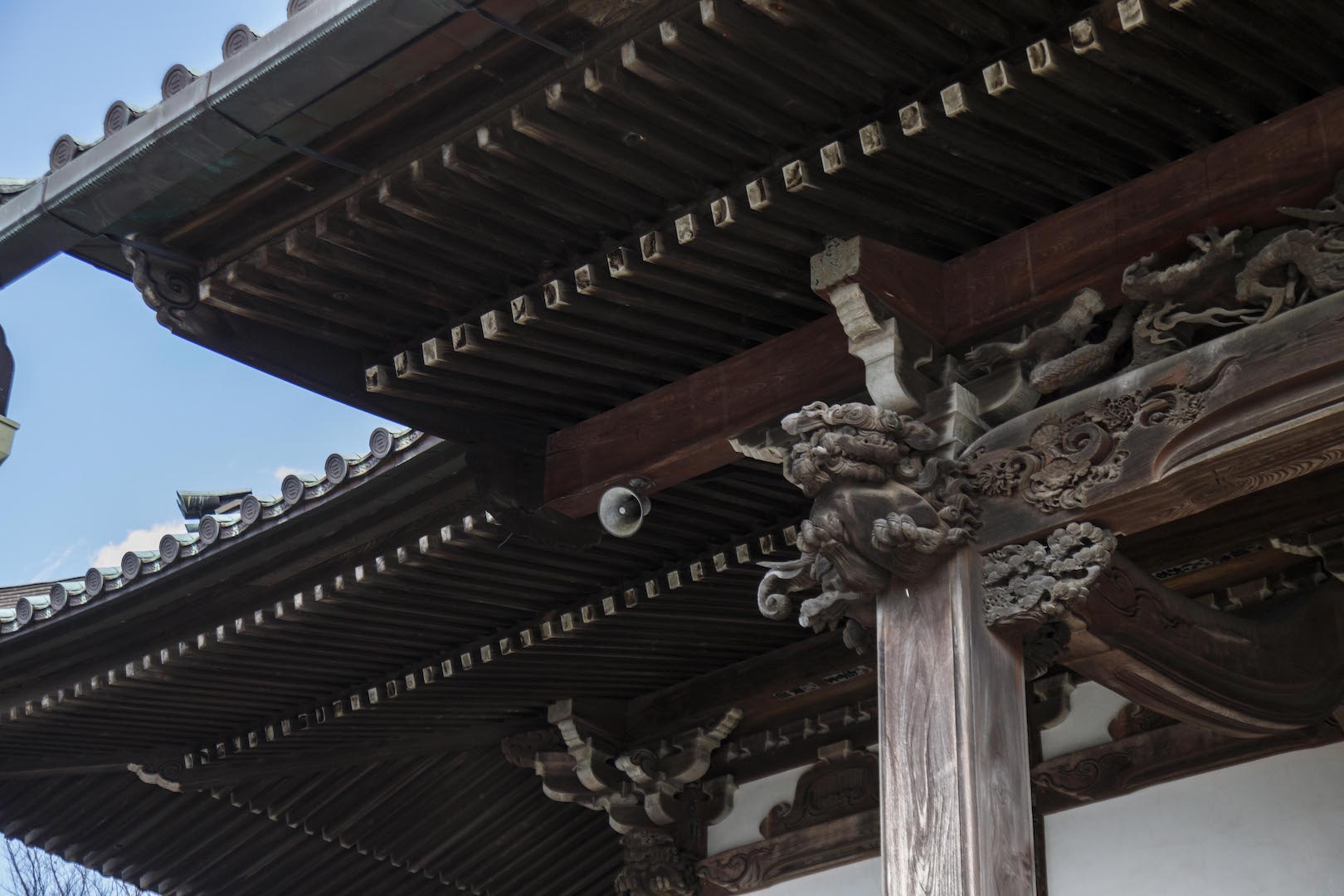
One landmark that stands out on the grounds is a huge ginkgo tree that is said to be 700 years old. Typhoon Hagibis in autumn 2019 snapped one of the big branches and caused a huge crack in the trunk, but thanks to conservation activities by tree surgeons and the local community, the tree is now beginning to heal.
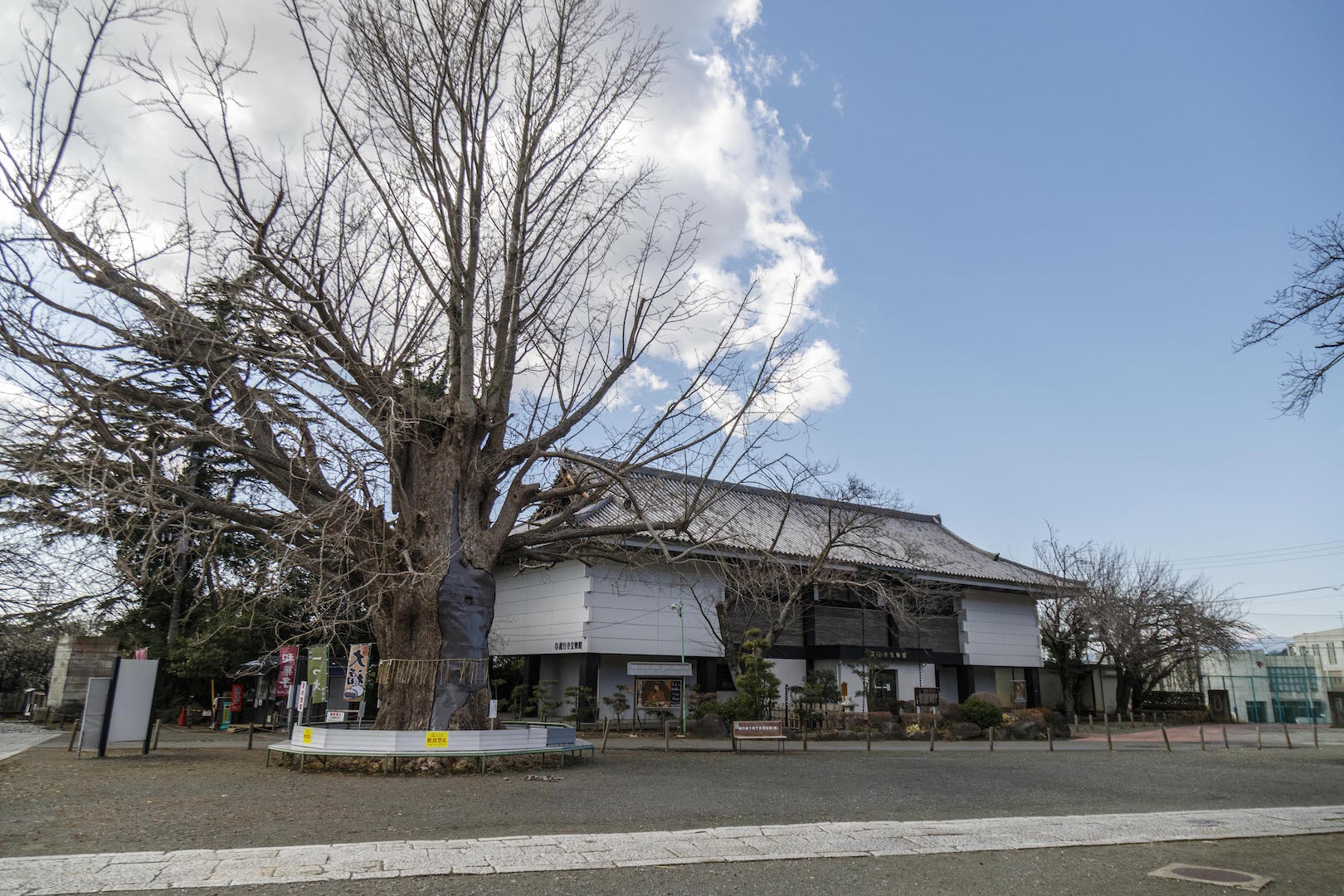
Chujakumon gate, built in 1859, is engraved with the chrysanthemum crest, which shows the connection to the imperial family, and the hollyhock crest of the Tokugawa family. The gate is the oldest wooden structure on the grounds and is designated as an Important Cultural Property.
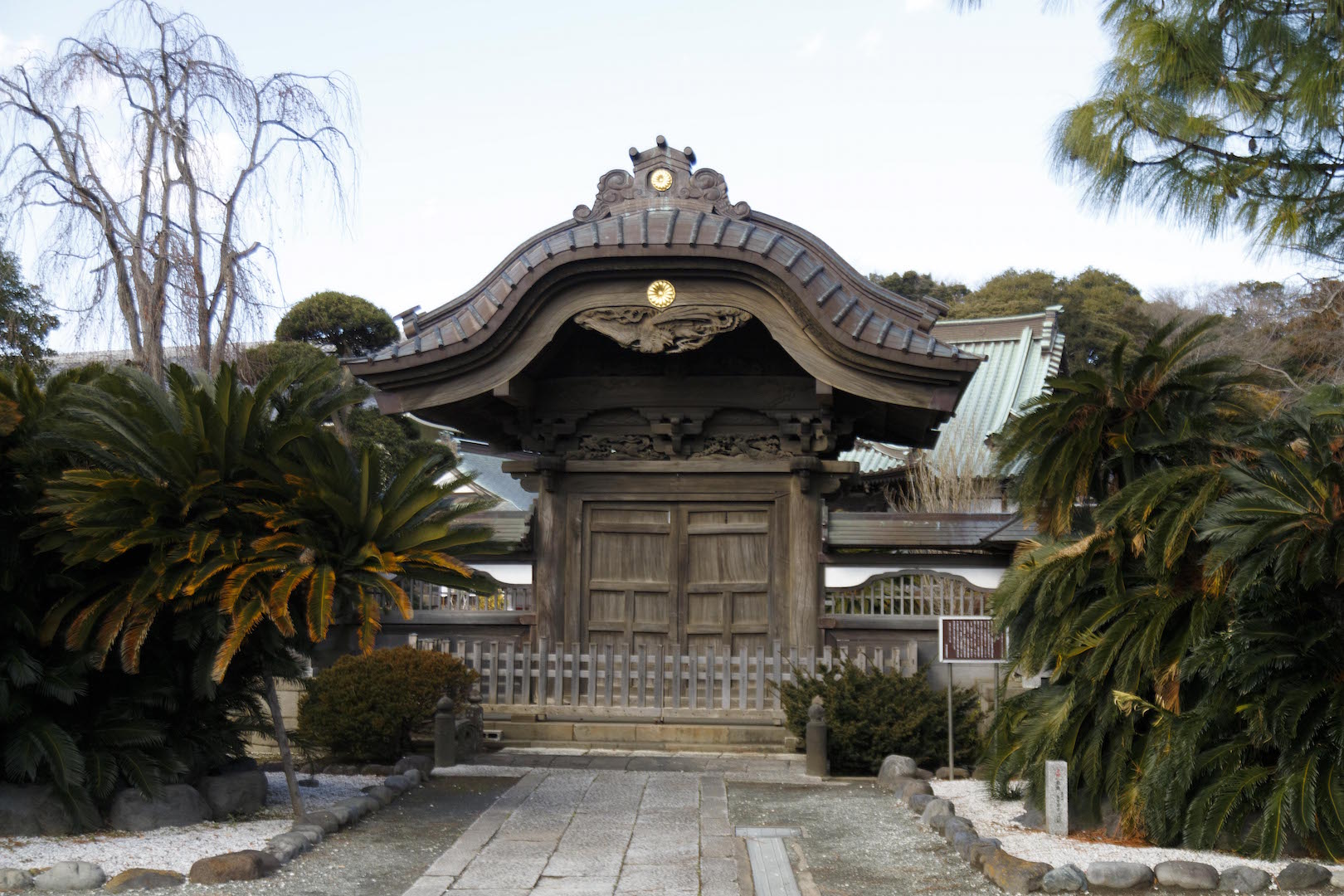
■Yugyoji Temple
[Address] 1-8-1 Nishitomi, Fujisawa
[Tel] 0466-22-2063
[Visiting Hours] 24 hours/day
* Click here for the official website of Yugyoji Temple.
Hakone-jinja Shrine
Kuzuryu-jinja Shrine
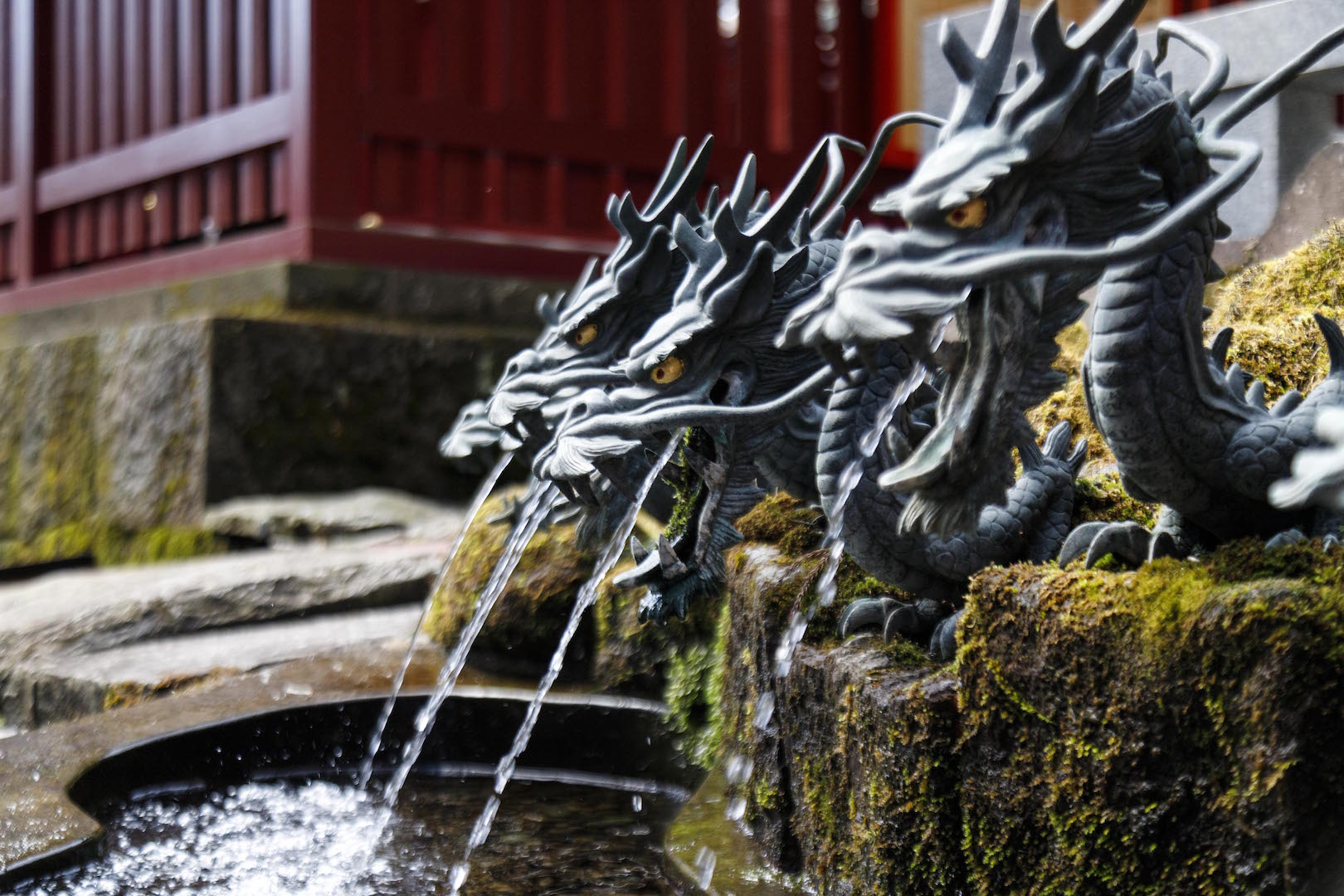
A long time ago, Mangan Shonin, who had a miraculous power bestowed upon him by Hakoneno-okami, disciplined a poisonous dragon that was causing suffering to the people, and then Mangan Shonin enshrined it as a guardian god of Ashinoko Lake. This is the origin of Kuzuryu-jinja Shrine. The shrines are believed to confer the blessings of luck, good fortune, prosperity in business, and success in romance, attracting a lot of worshippers. There are two shrines, the main shrine located in Hakone Kuzuryu no Mori, and the separate new shrine located on the grounds of Hakone-jinja Shrine, so check out the main shrine first.
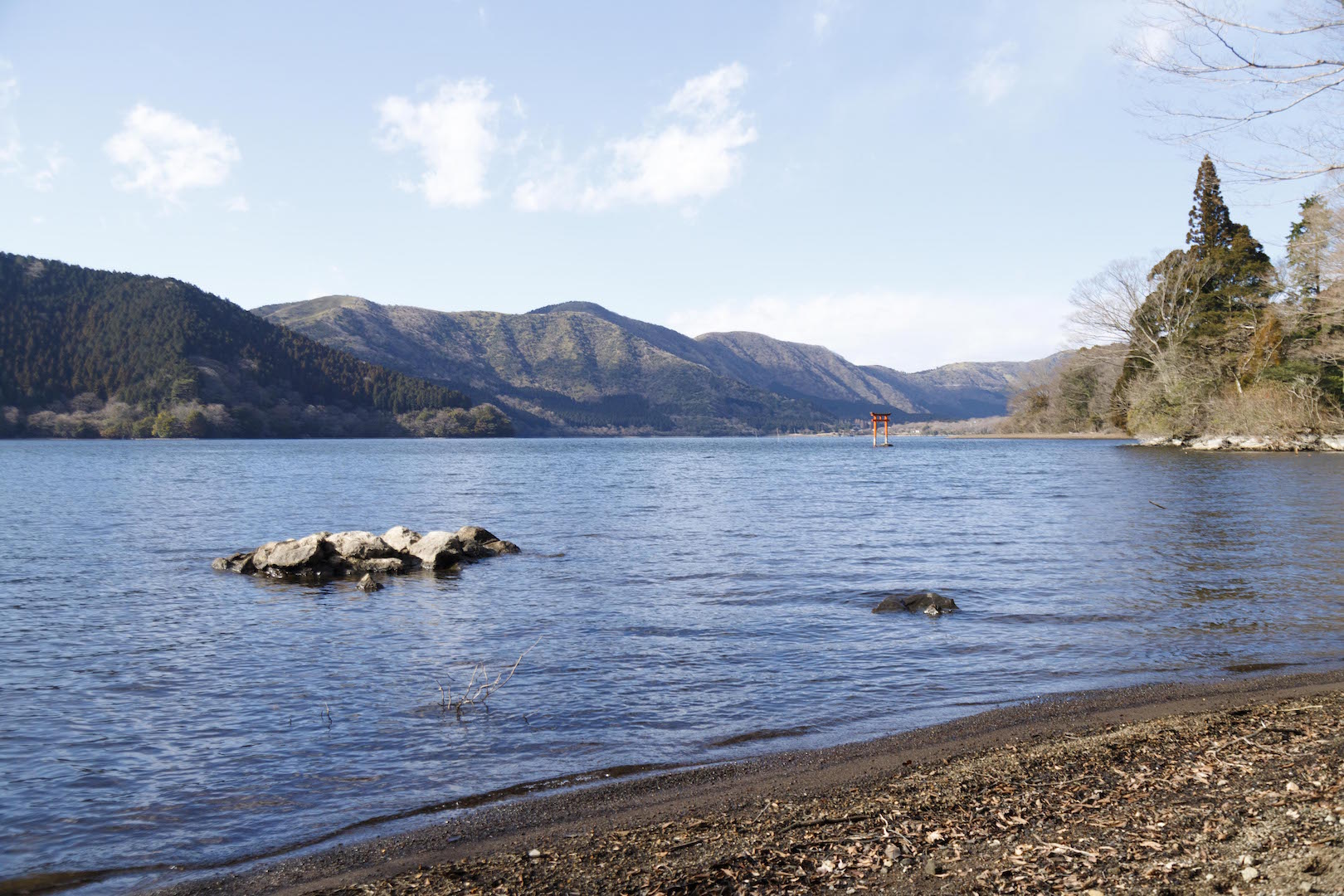
It takes about 30 minutes on foot from Hakone-en to the main shrine using the pedestrian and bicycle path. While strolling by Ashinoko Lake, you will see a red torii in the lake.

The Tsukinamisai Festival at the main shrine is held on the 13th of every month. On these days, an Ashinoko cruise is scheduled for the worshippers, carrying them by boat to the entrance of Hakone Kuzuryu no Mori.
* Currently, visitors cannot participate in the Tsukinamisai Festival due to COVID-19, and the festival is attended only by the Shinto priests.
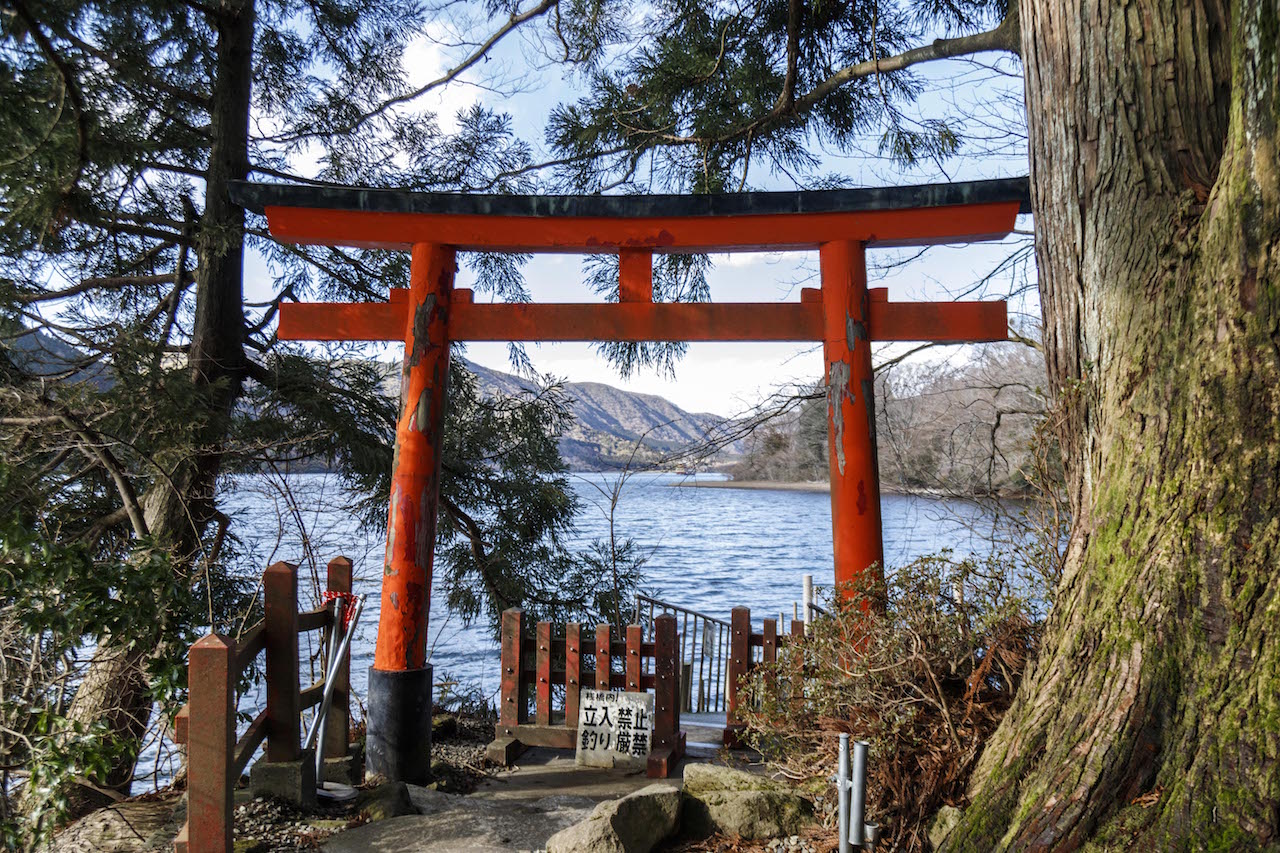
The new shrine is on the grounds of Hakone-jinja Shrine and is easily accessible. As it allows you to visit two shrines, Hakone-jinja Shrine and Kuzuryu-jinja Shrine, just by visiting one place, we recommend those who do not have much time to drop by here.
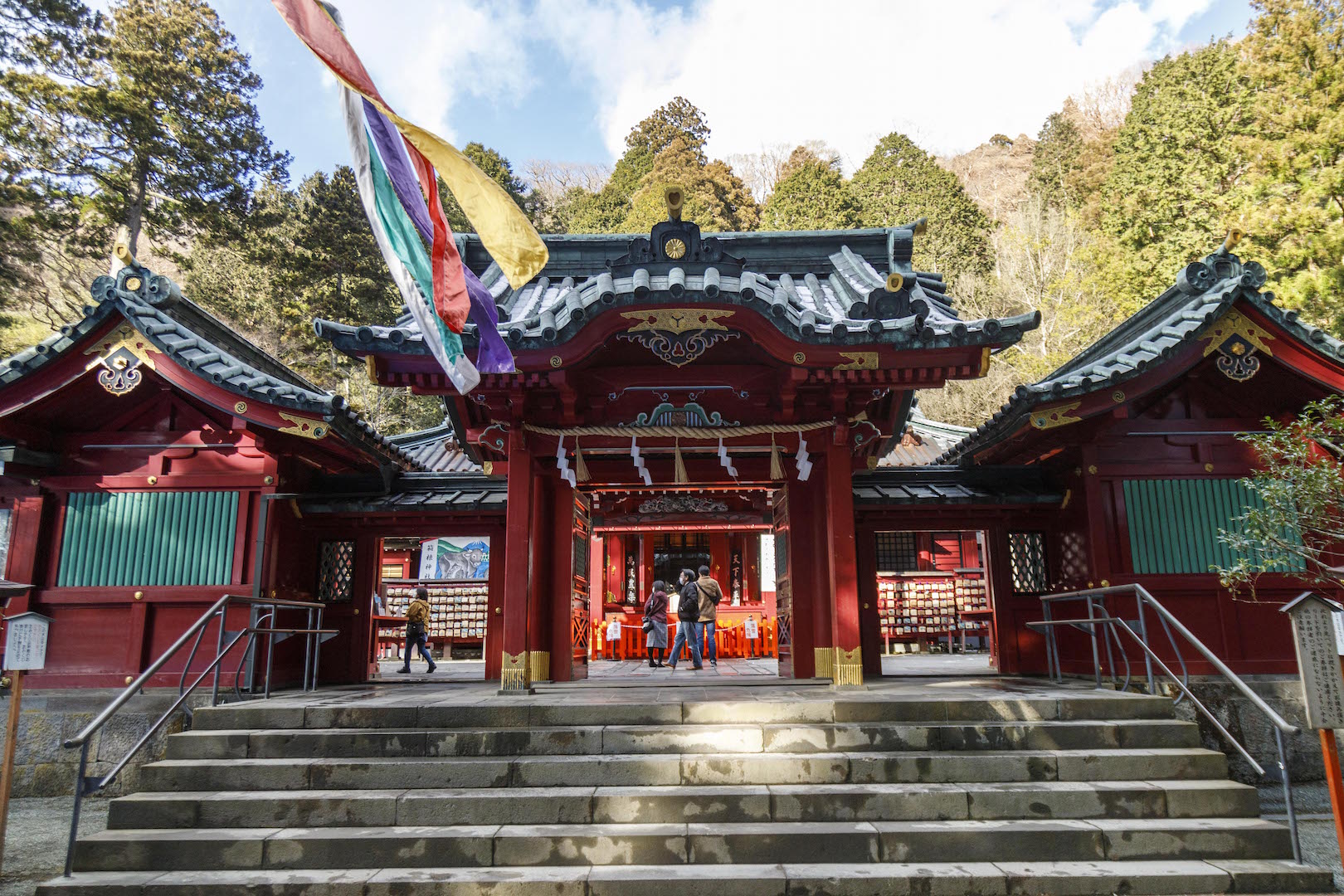
Hakone-jinja Shrine has been called Kanto Sochinju Hakone Gongen since ancient times, and is famous for offering the blessings of protection from bad luck, wishes coming true, and traffic safety; it is worshipped by many even now.
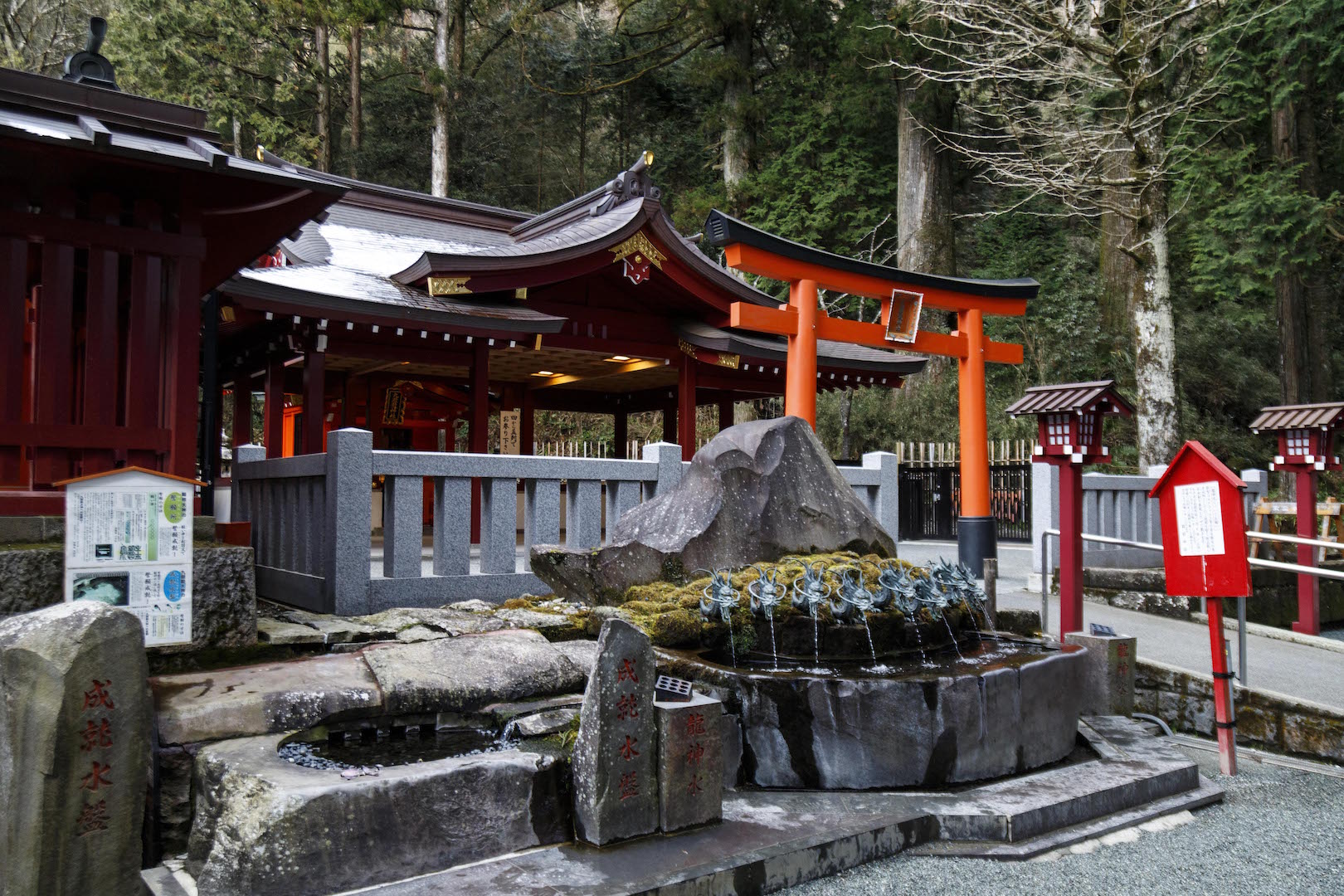
Miraculous water, Ryujinsui, springs from the front of the new shrine. Anyone can draw Ryujinsui, and you can purchase a bottle (100 yen) at the office if you’d like to take the water home, so please feel free to do so.
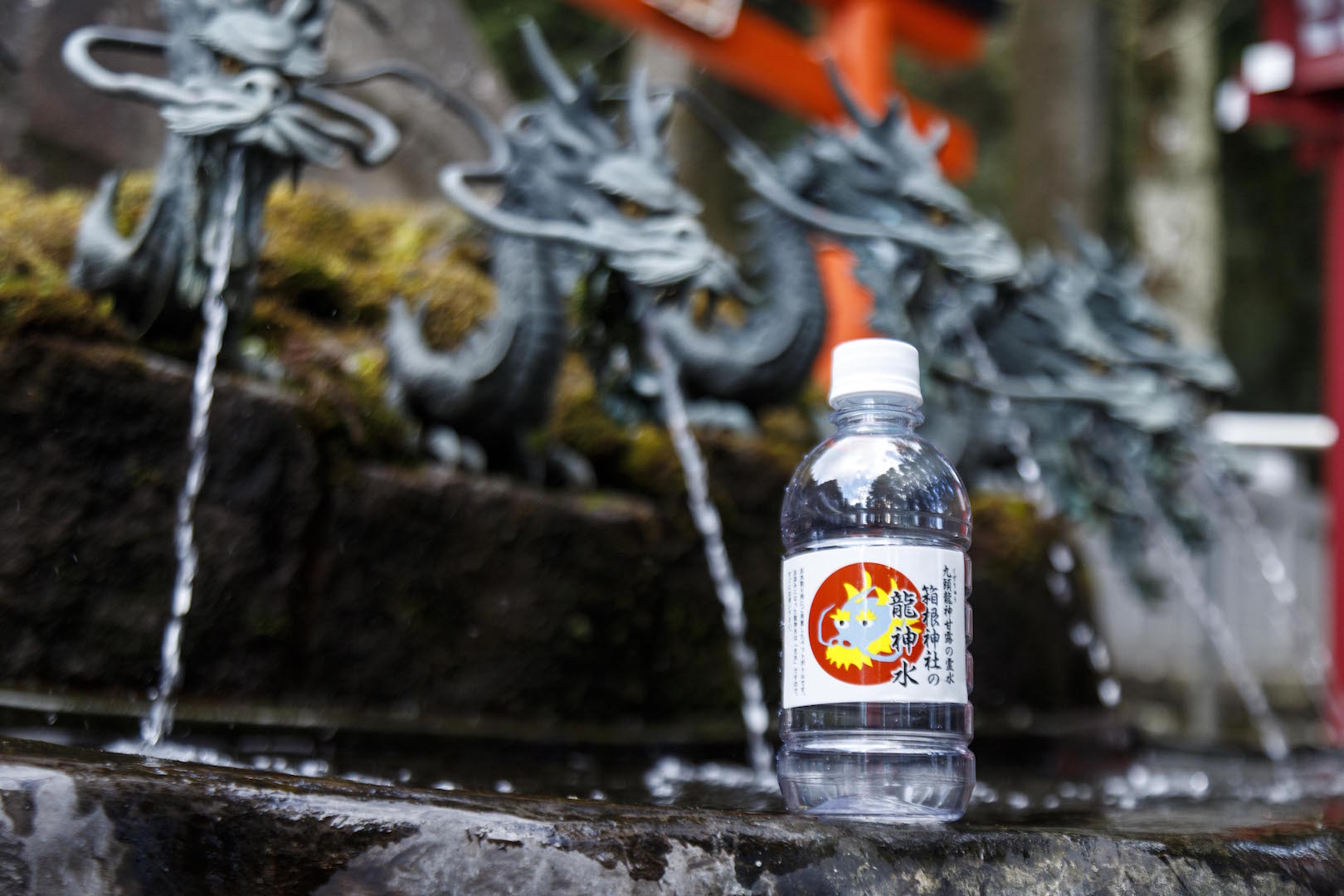
Ryujinsui flows into a stone basin where you can write your wish on a wish paper, float it on Ryujinsui, and let it flow and melt to pray for the wish to come true. The wish paper (500 yen) can be purchased at the office.
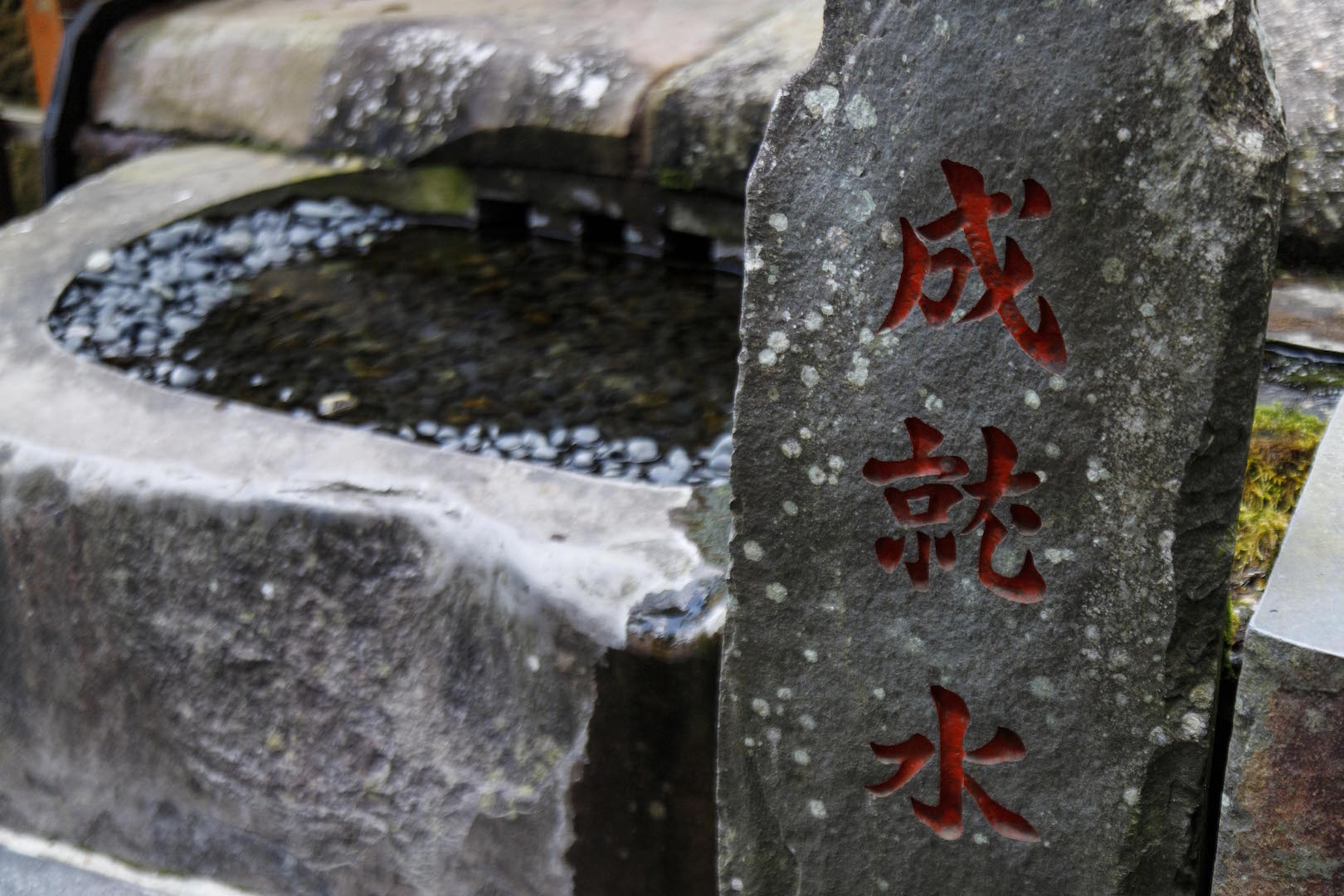
■Hakone-jinja Shrine, Kuzuryu-jinja Shrine (new shrine)
[Address] 80-1 Motohakone, Hakone-machi
[Tel] 0460-83-7123
[Visiting Hours] 24 hours/day (Parking lot: 7:00a.m. - 5:00p.m./Office: 8:30a.m. - 5:00p.m.)
■Kuzuryu-jinja Shrine (main shrine)
[Address] (Within Hakone Kuzuryu no Mori) Bogasawa, Motohakone, Hakone-machi
[Tel] 0460-83-7123 (Hakone-jinja Shrine)
[Visiting Hours] 9:00 a.m. - 4:00 p.m. * Dependent on the visiting hours of Hakone Kuzuryu no Mori.
* Click here for the official website of Hakone-jinja Shrine and Kuzuryu-jinja Shrine.

